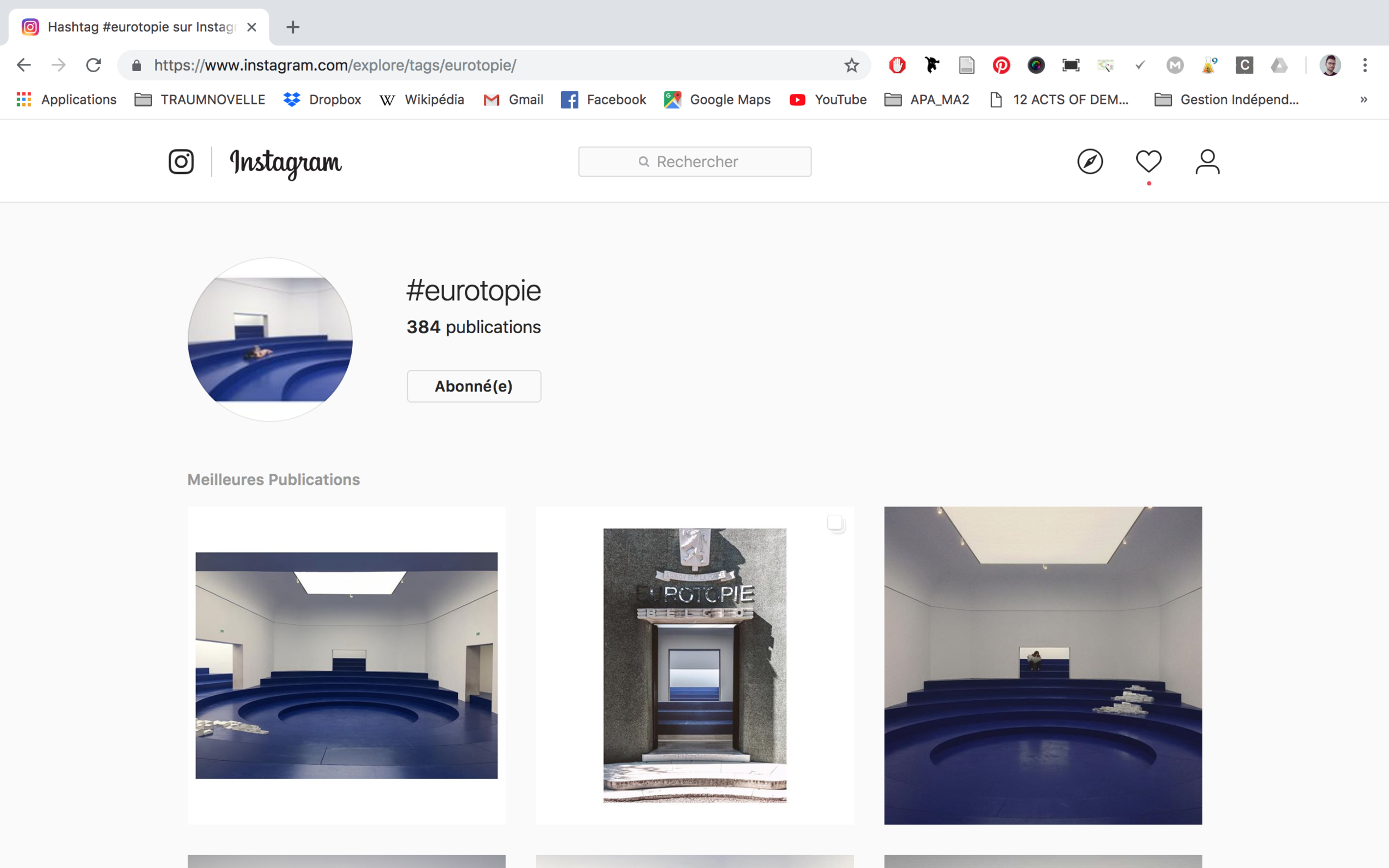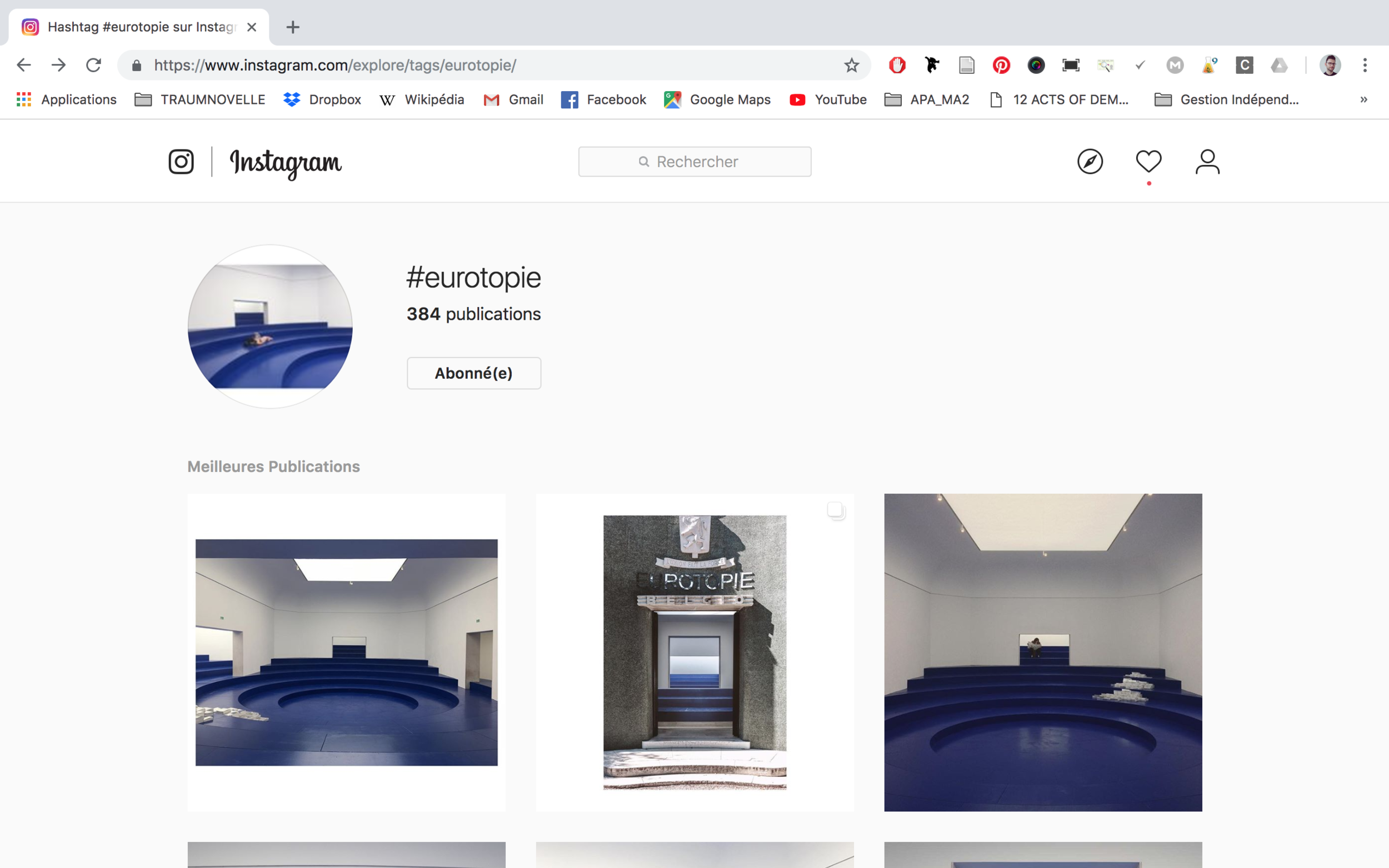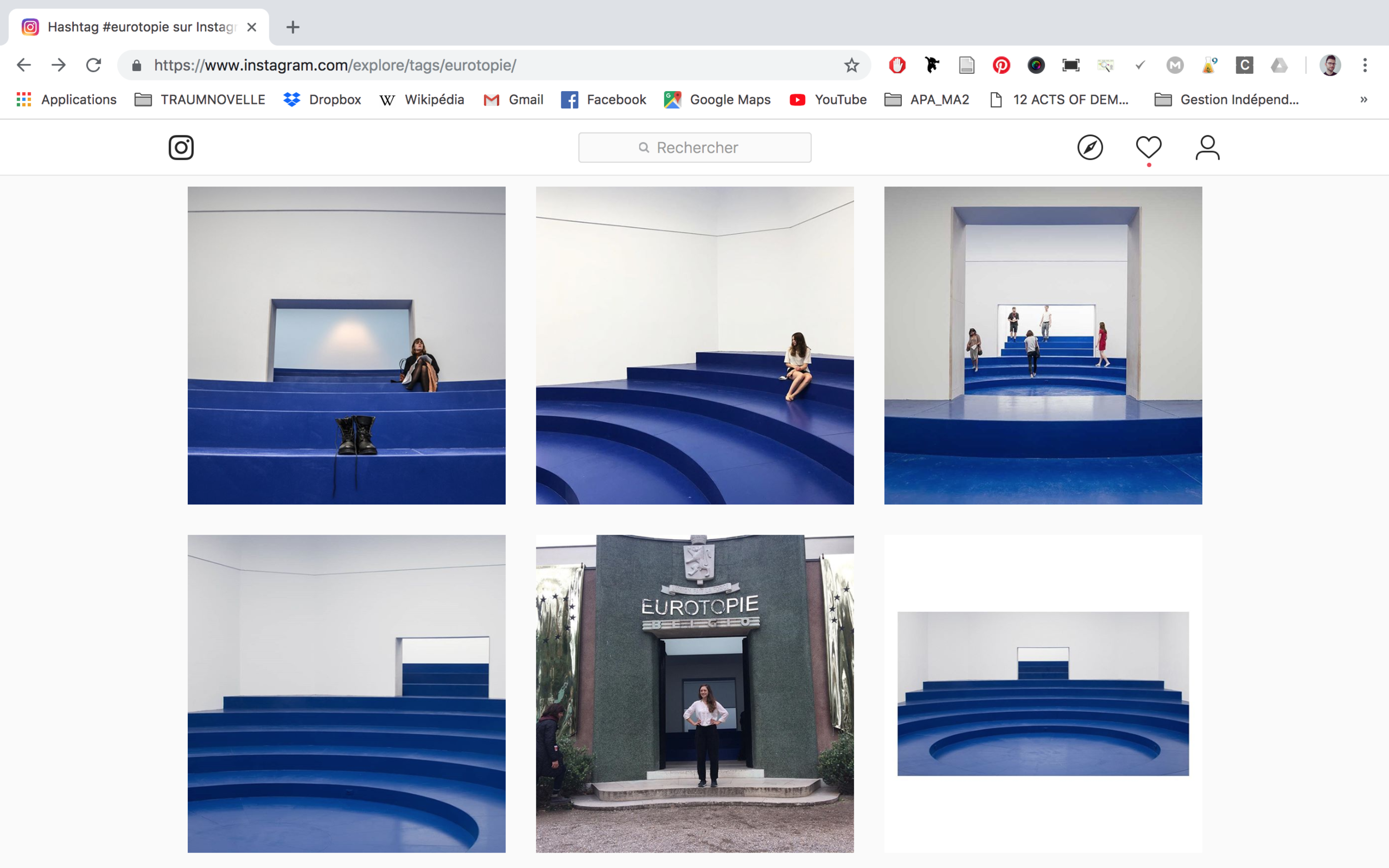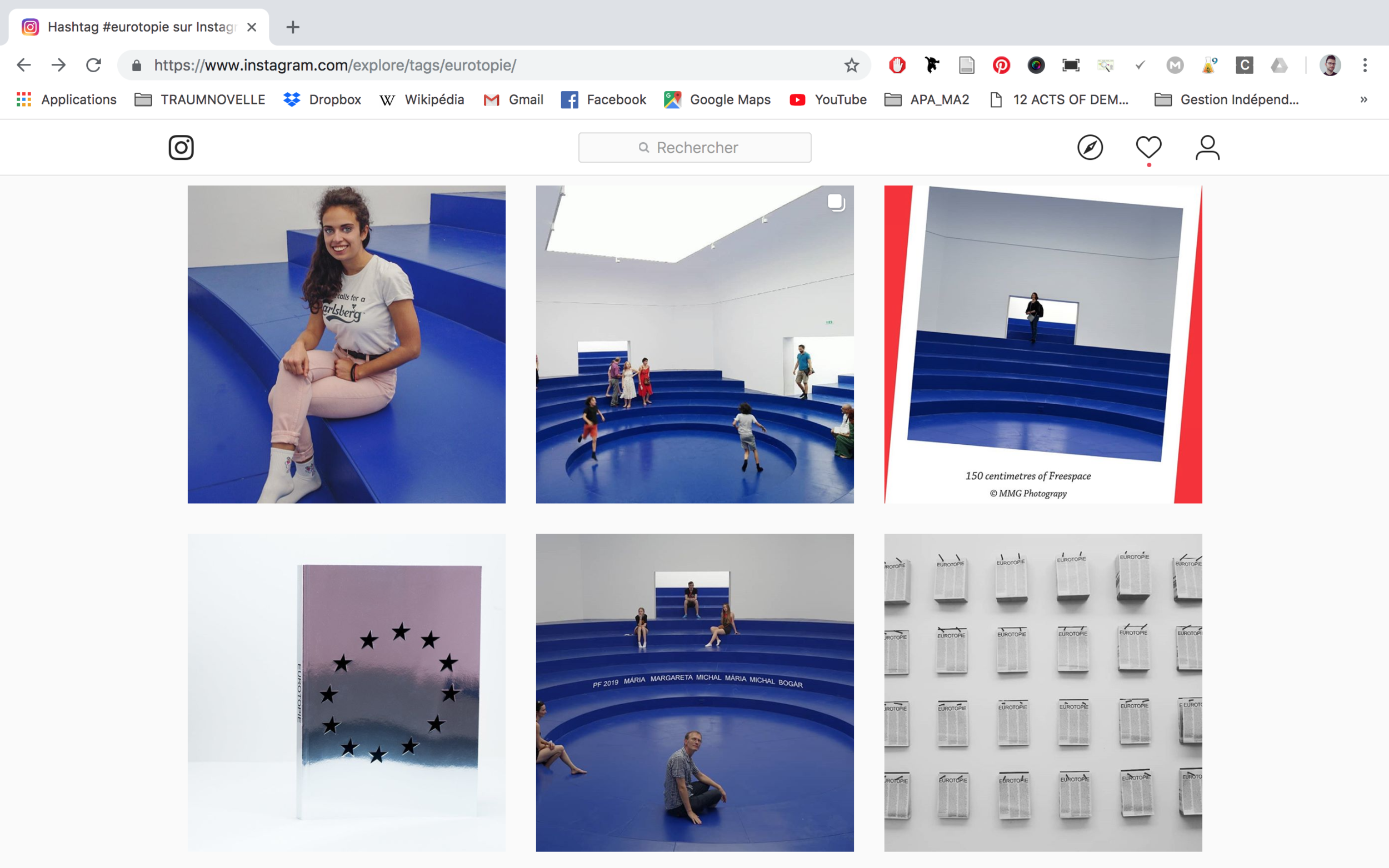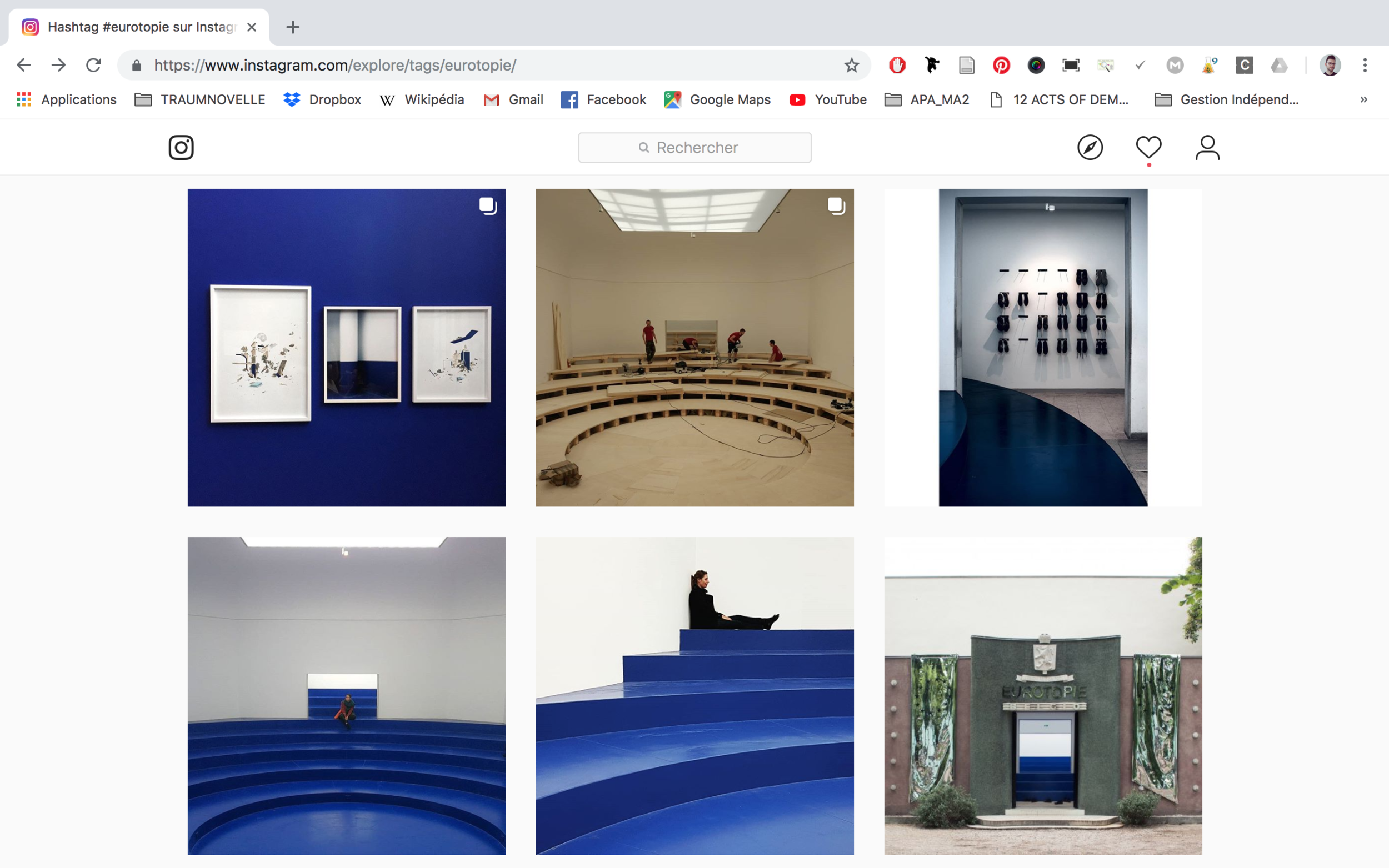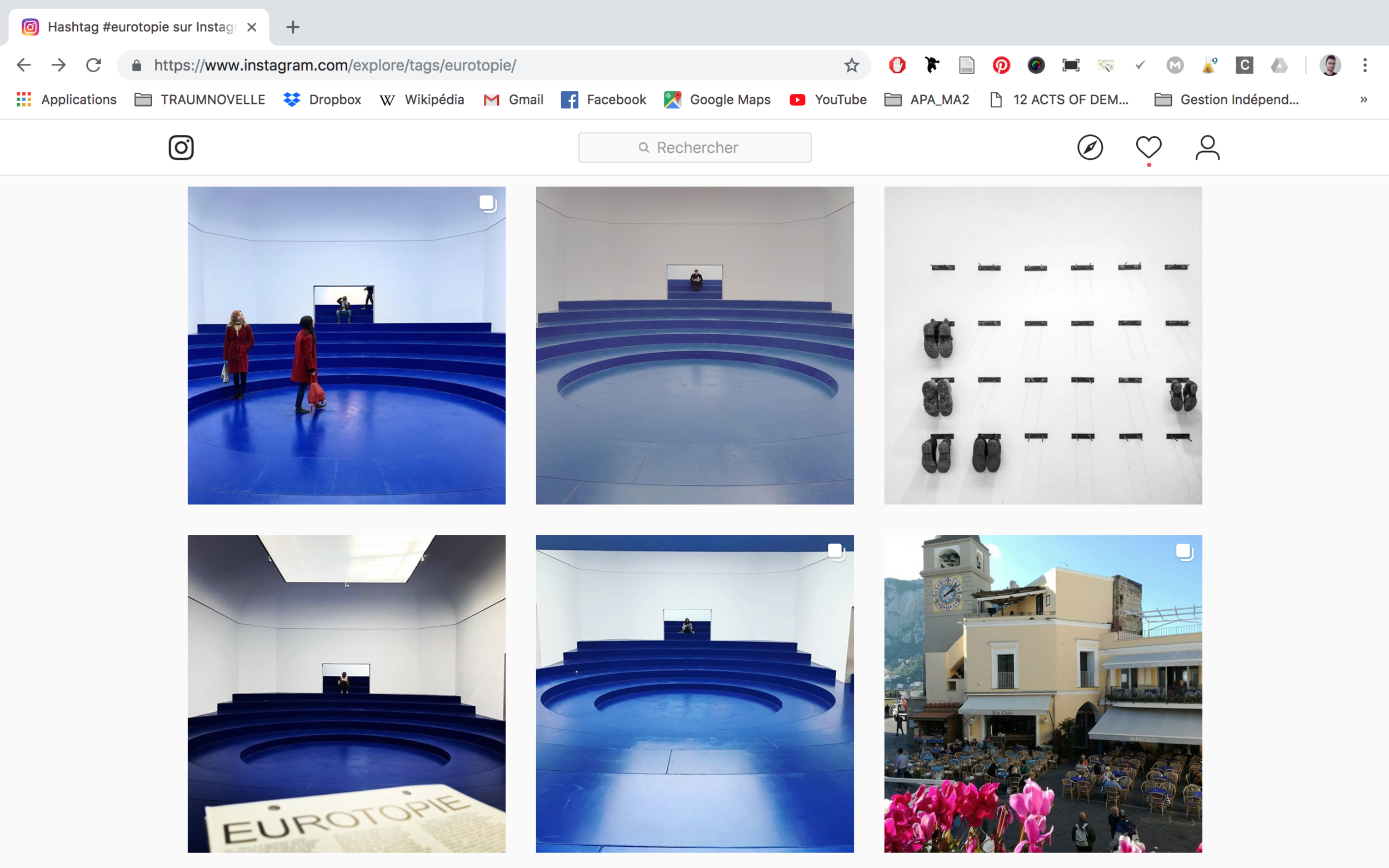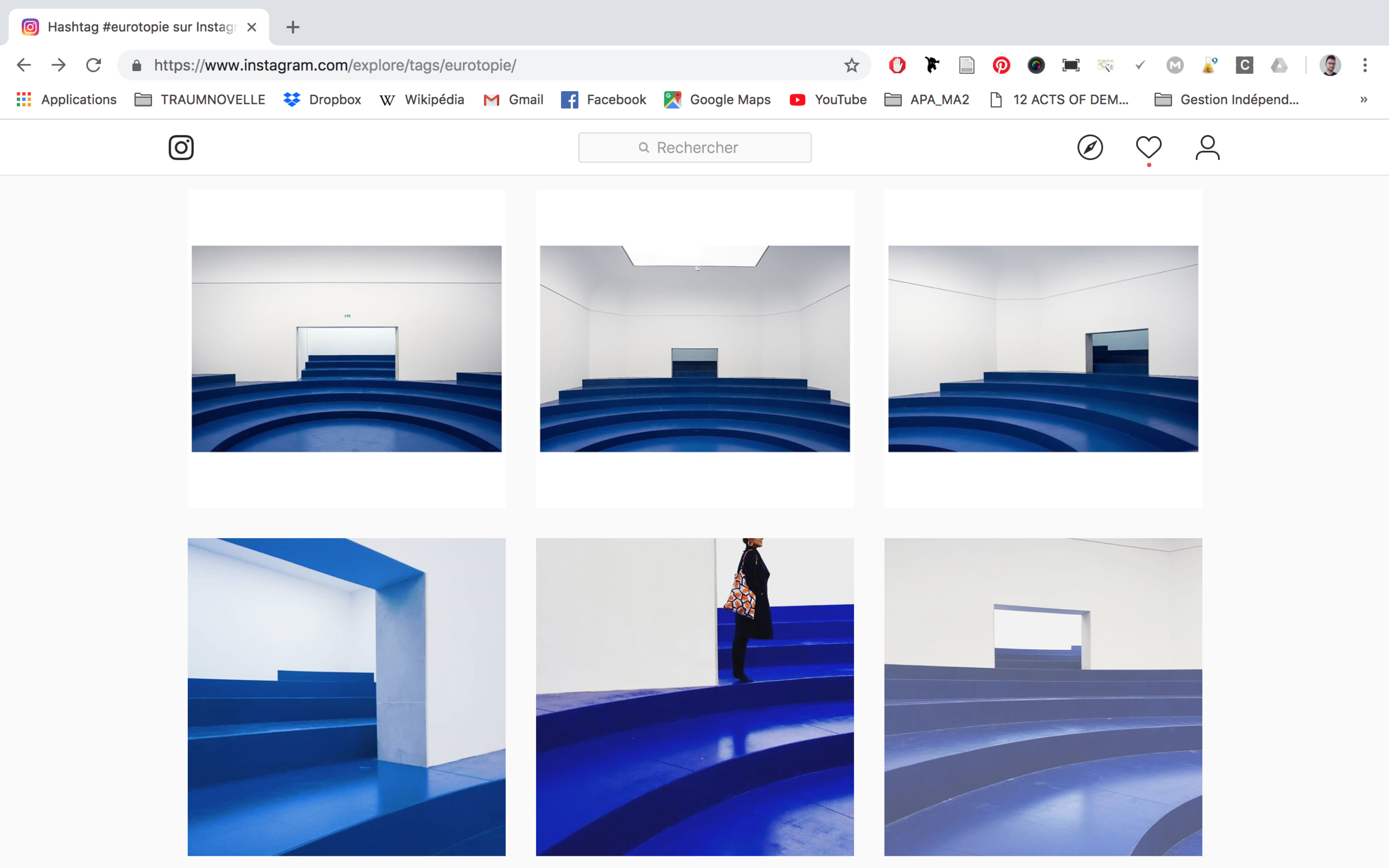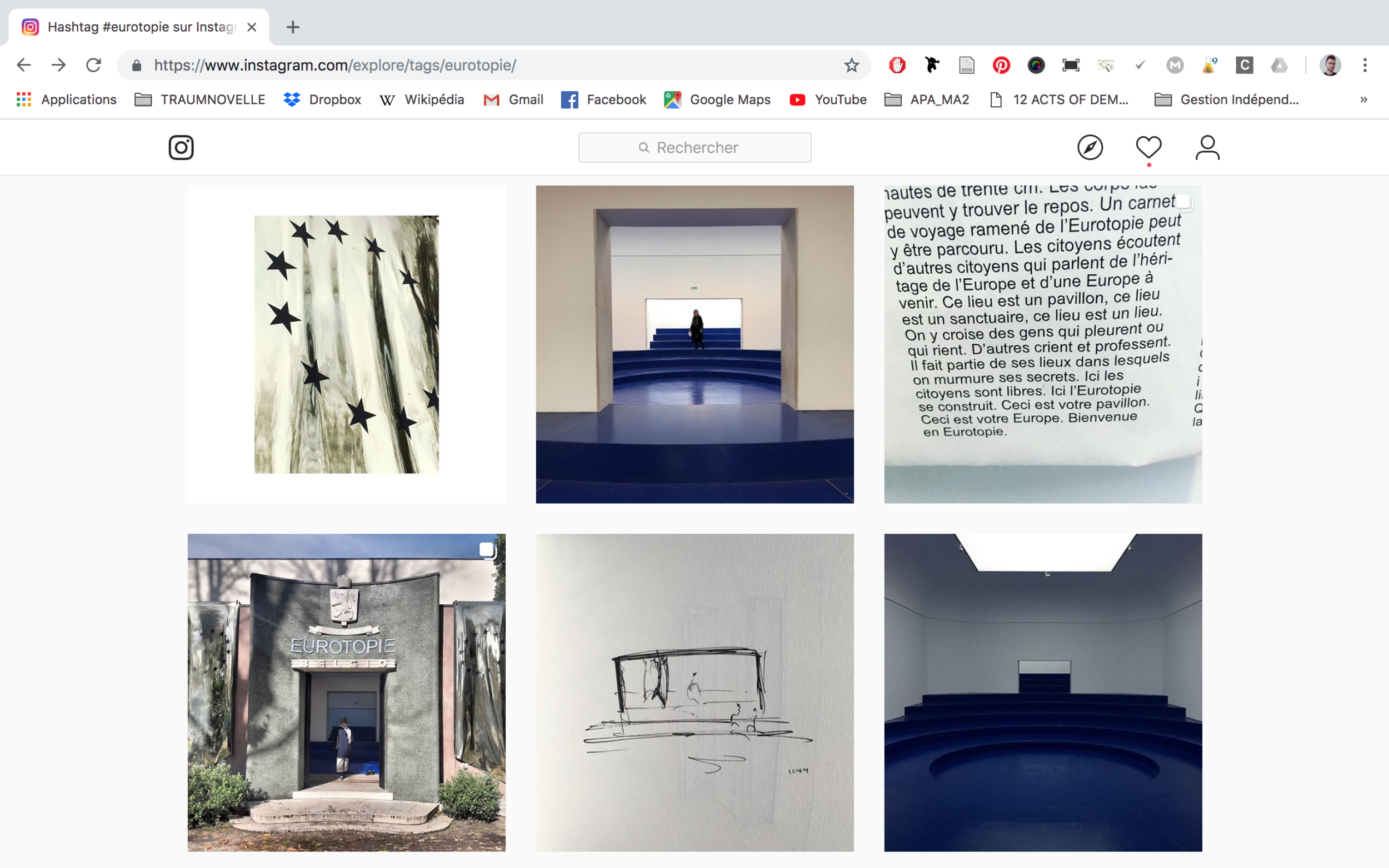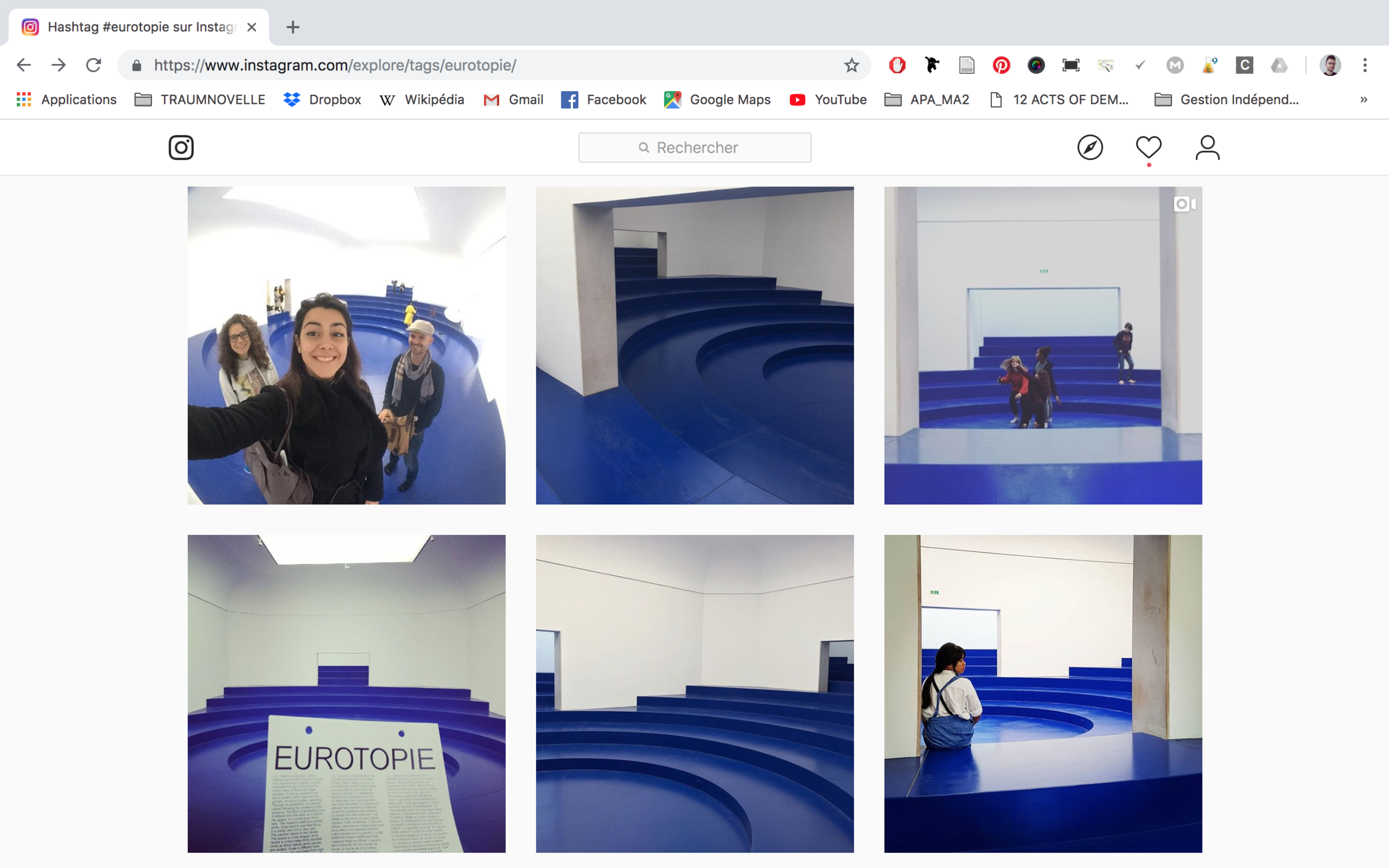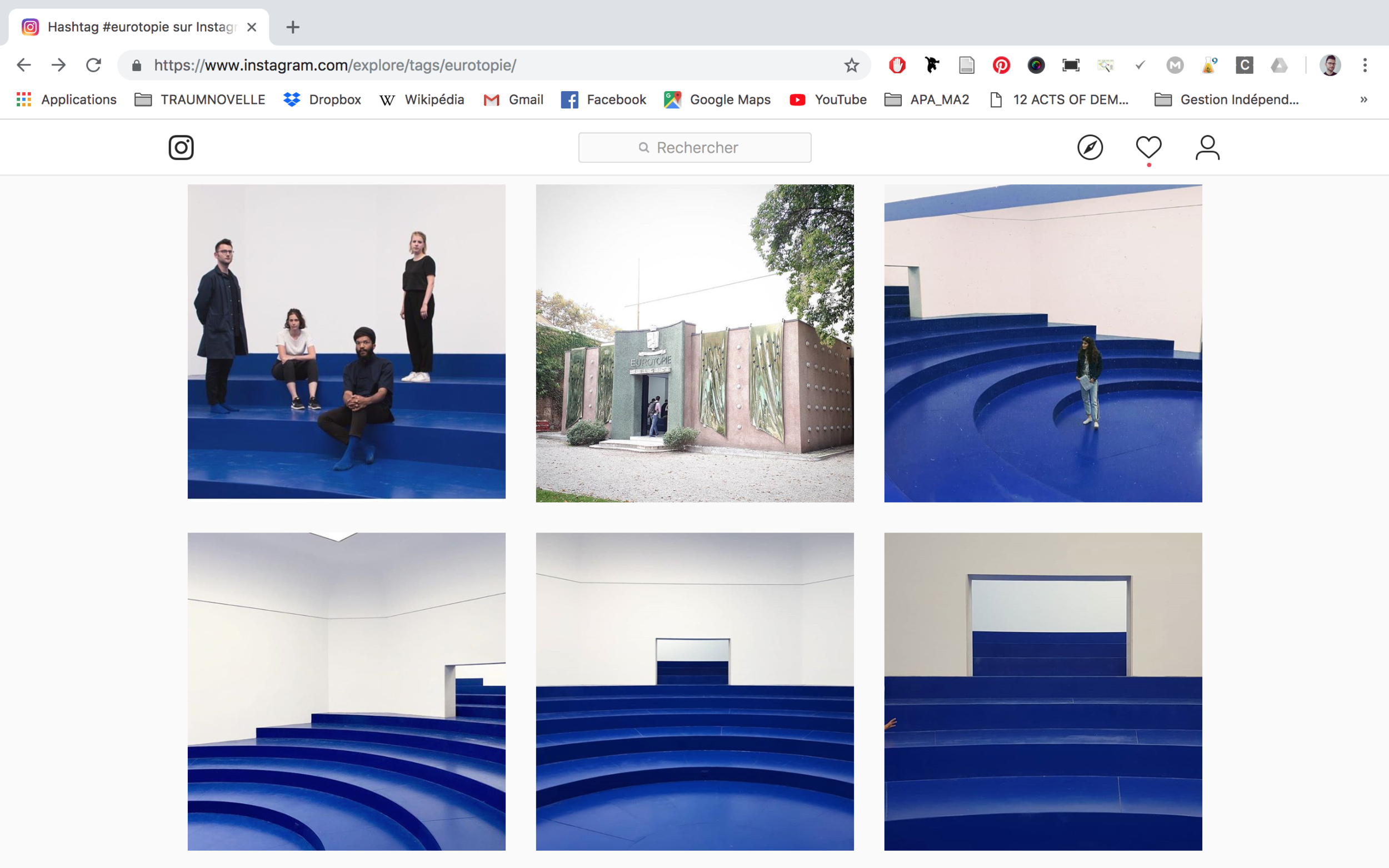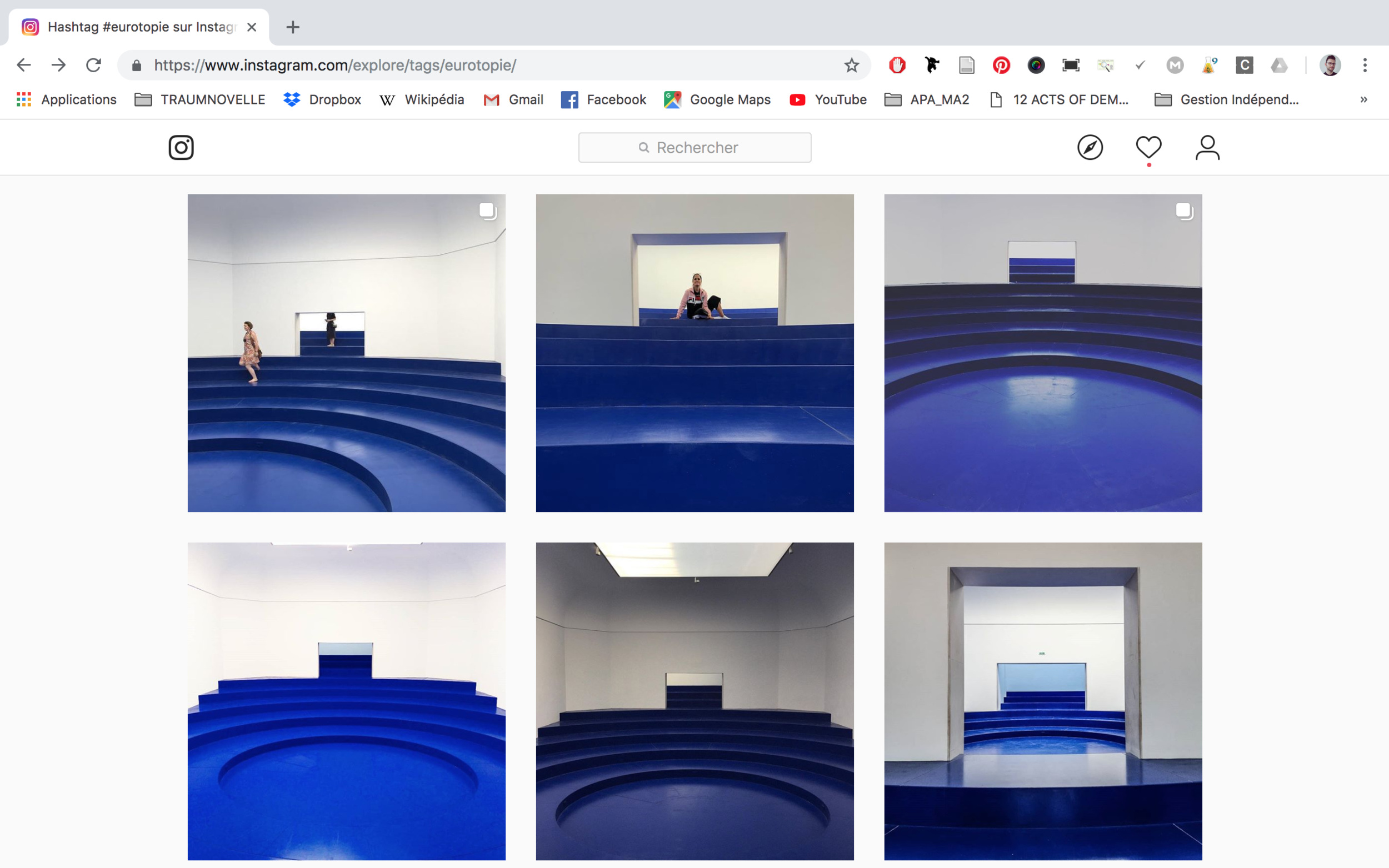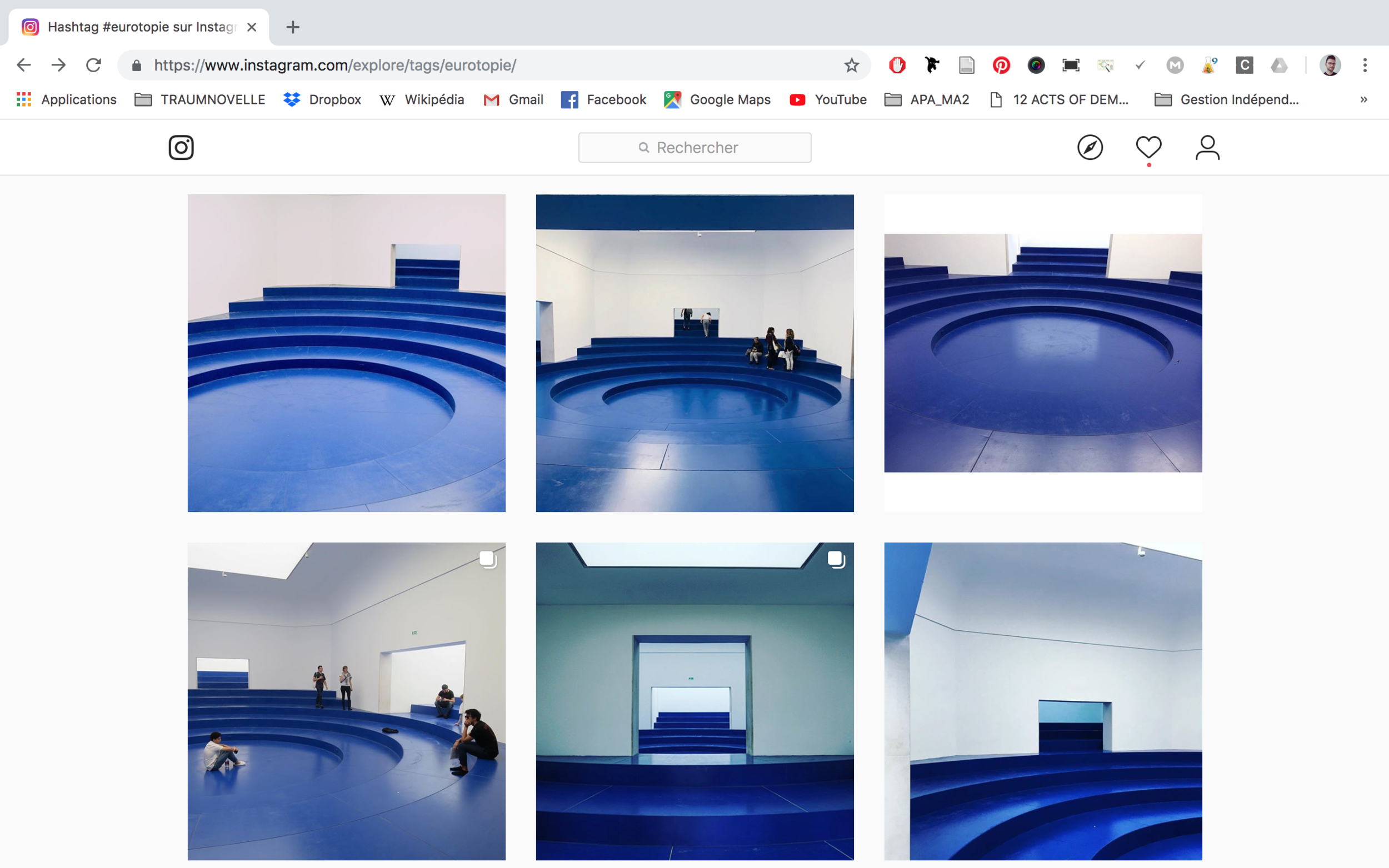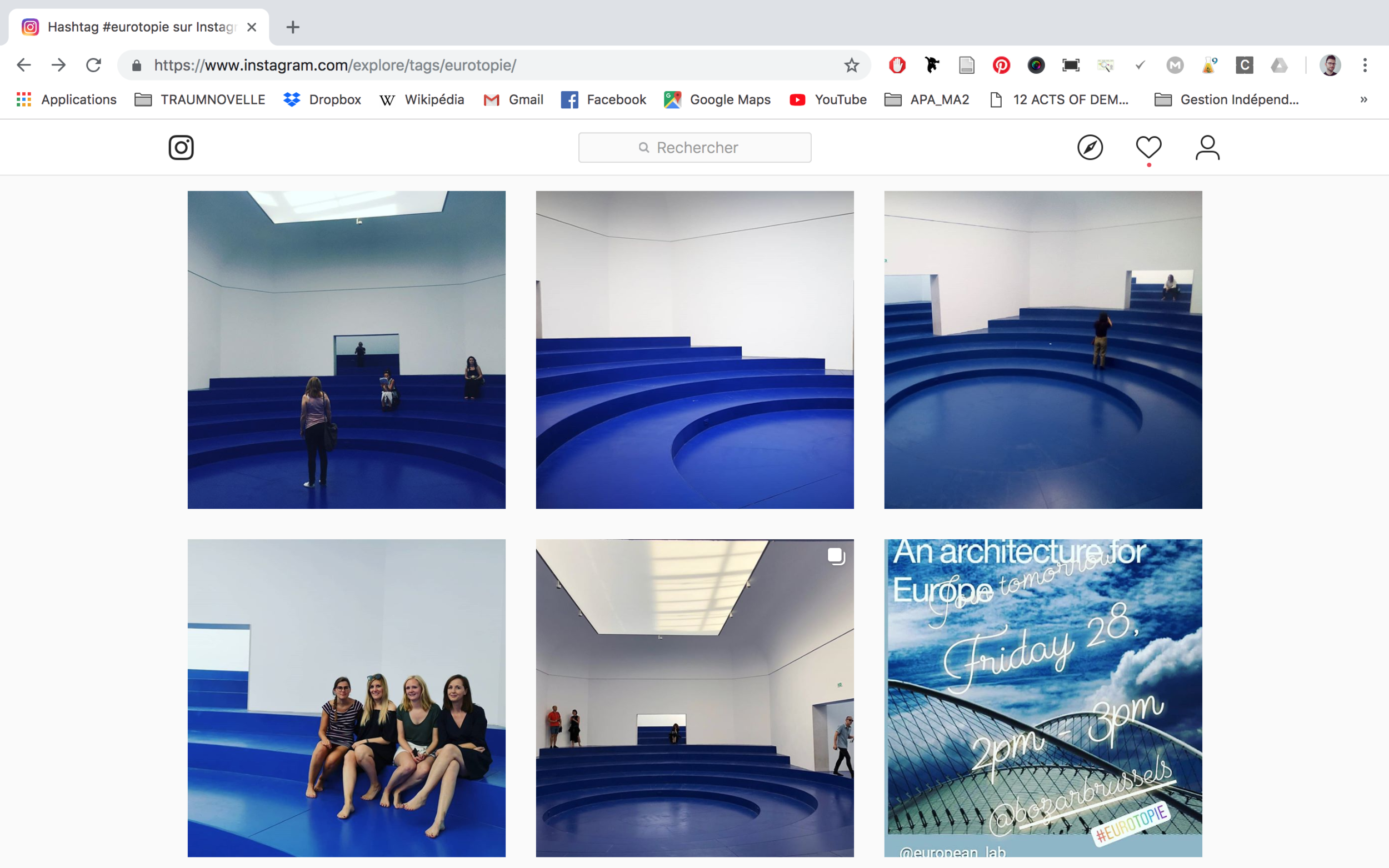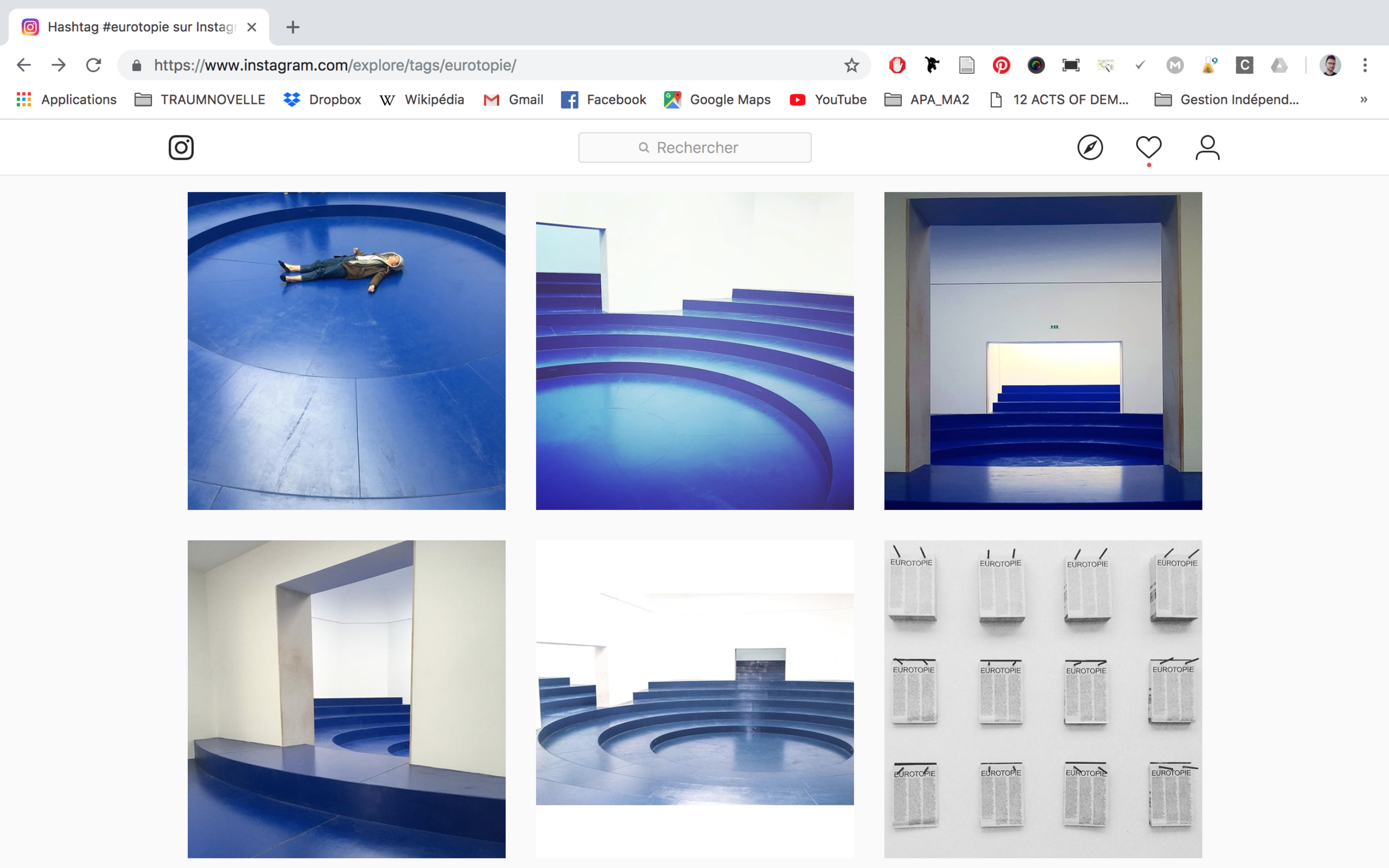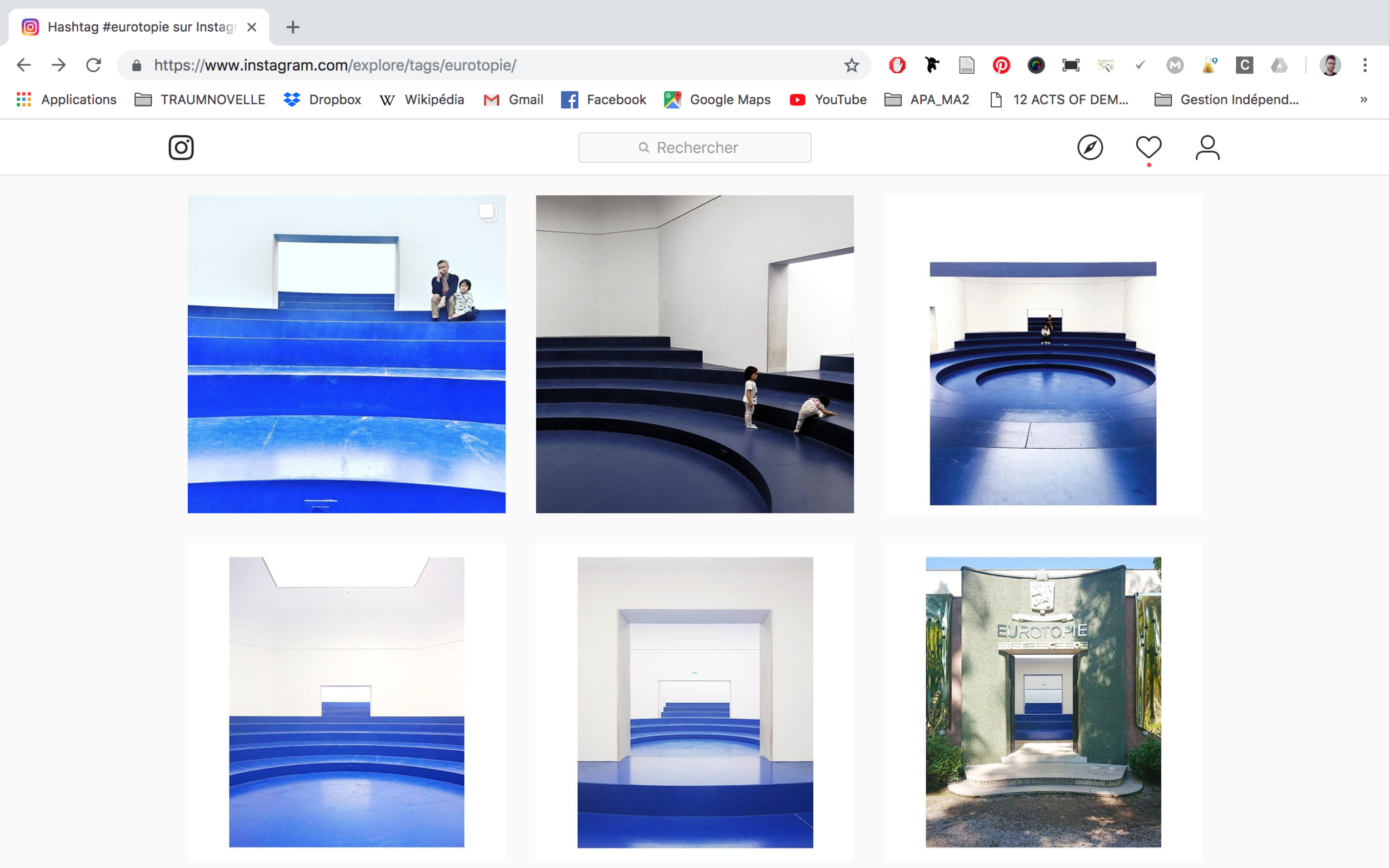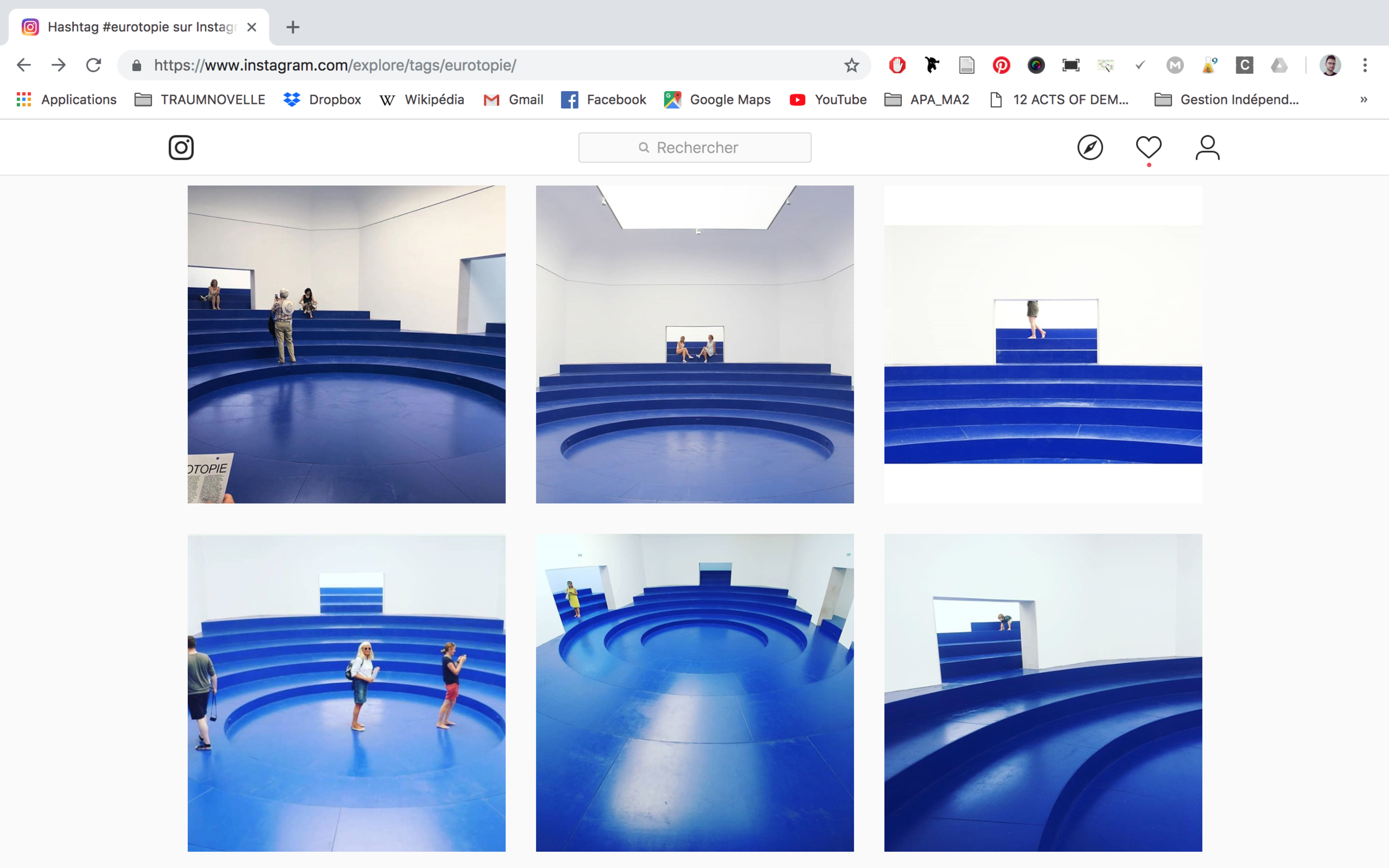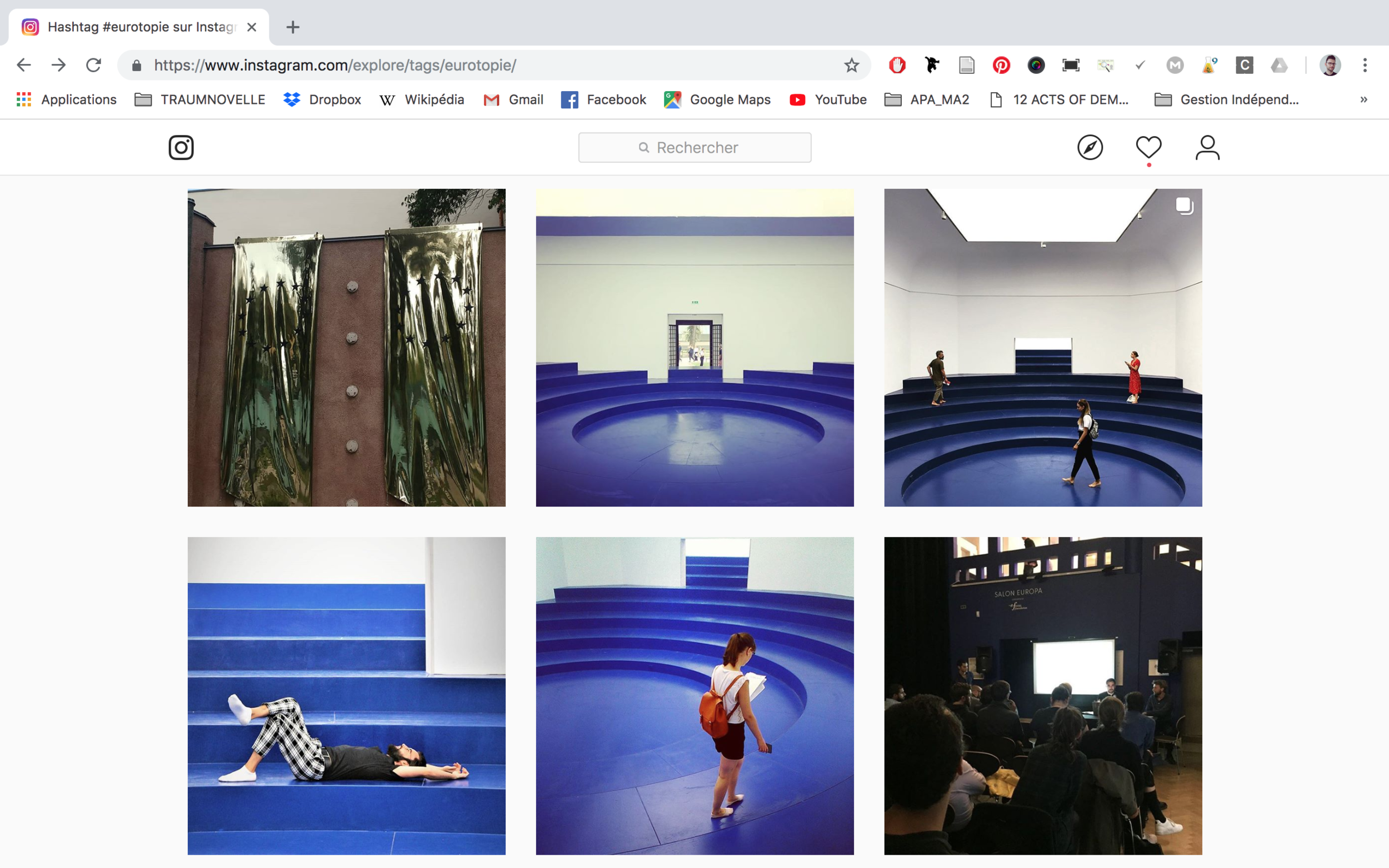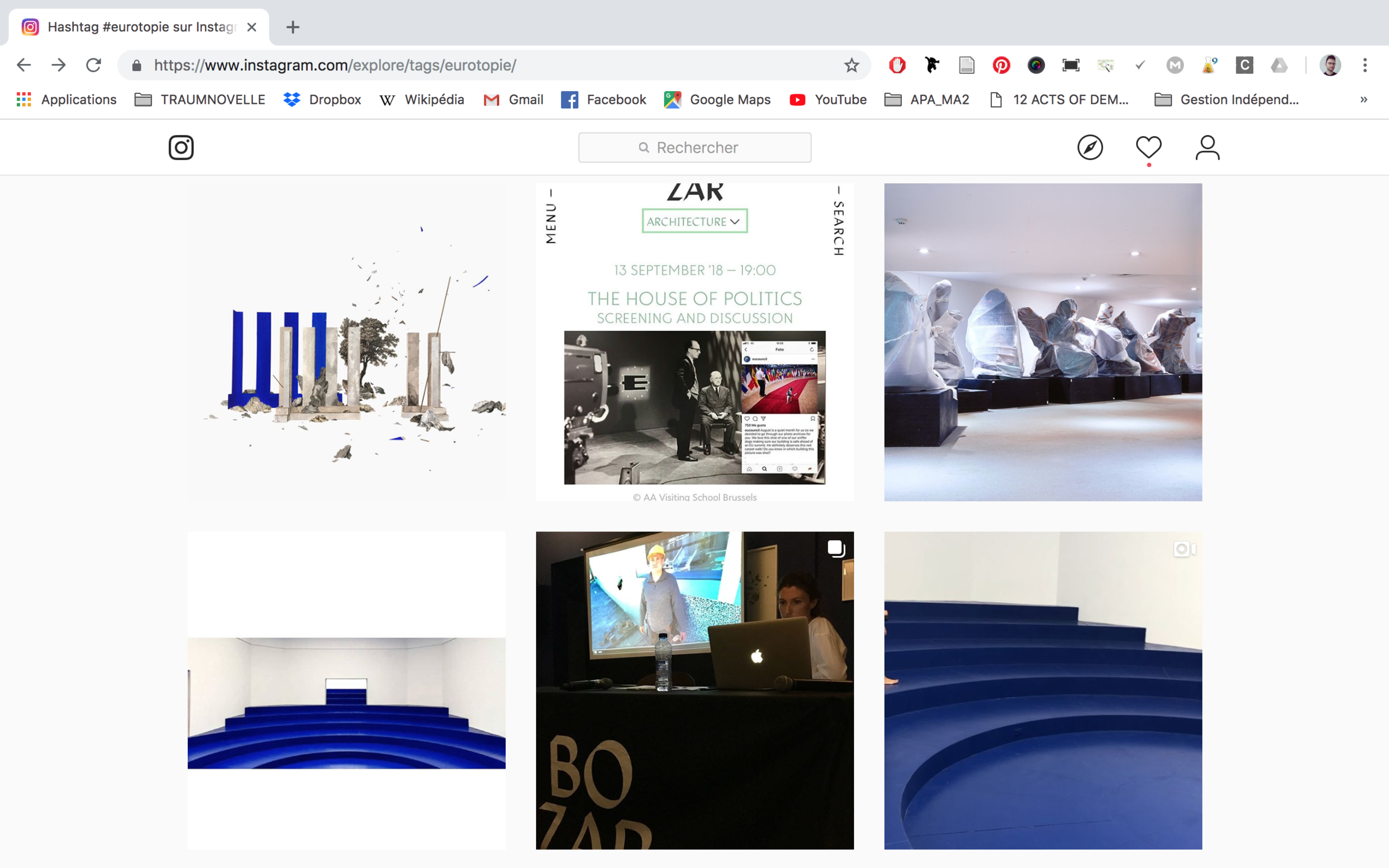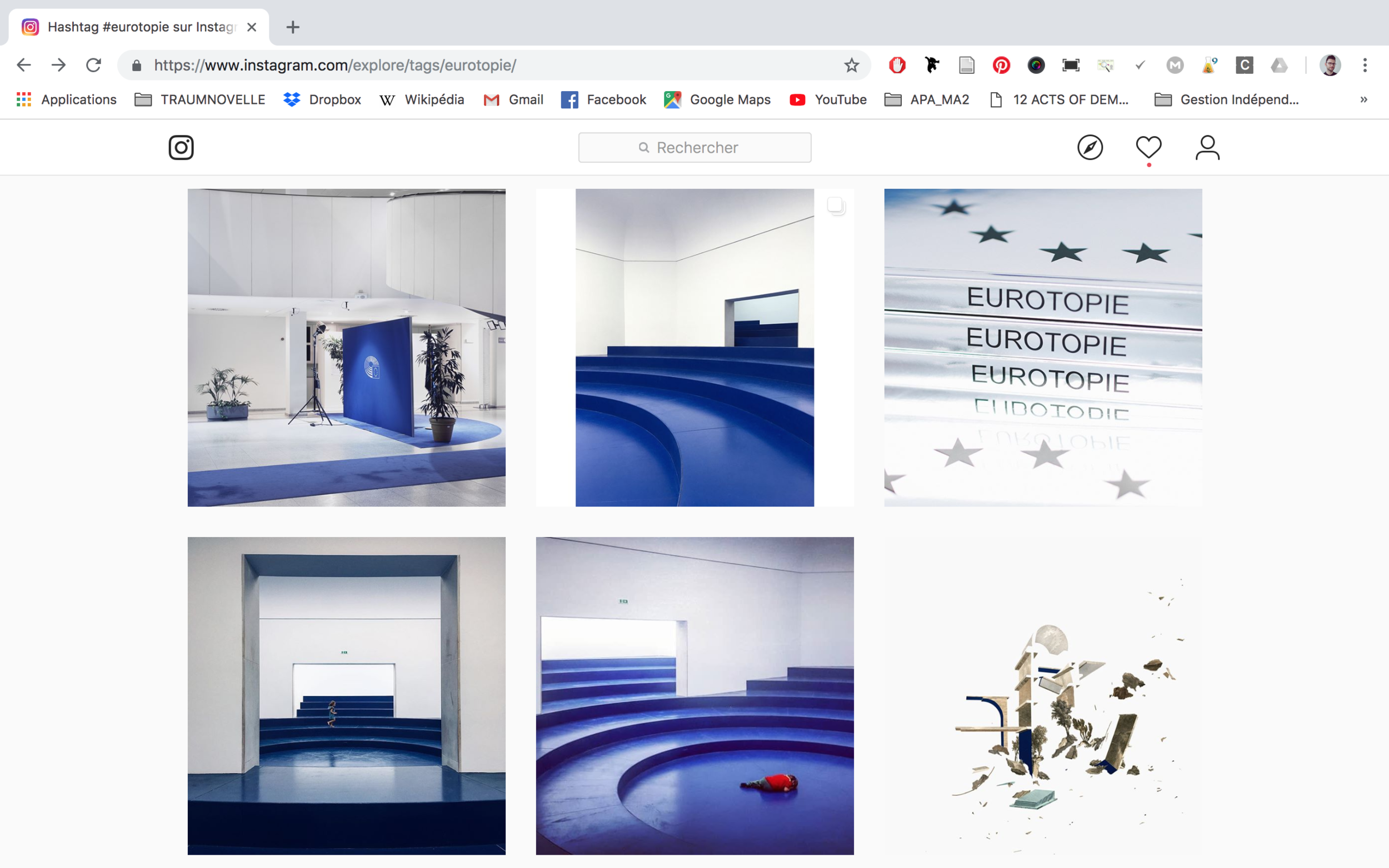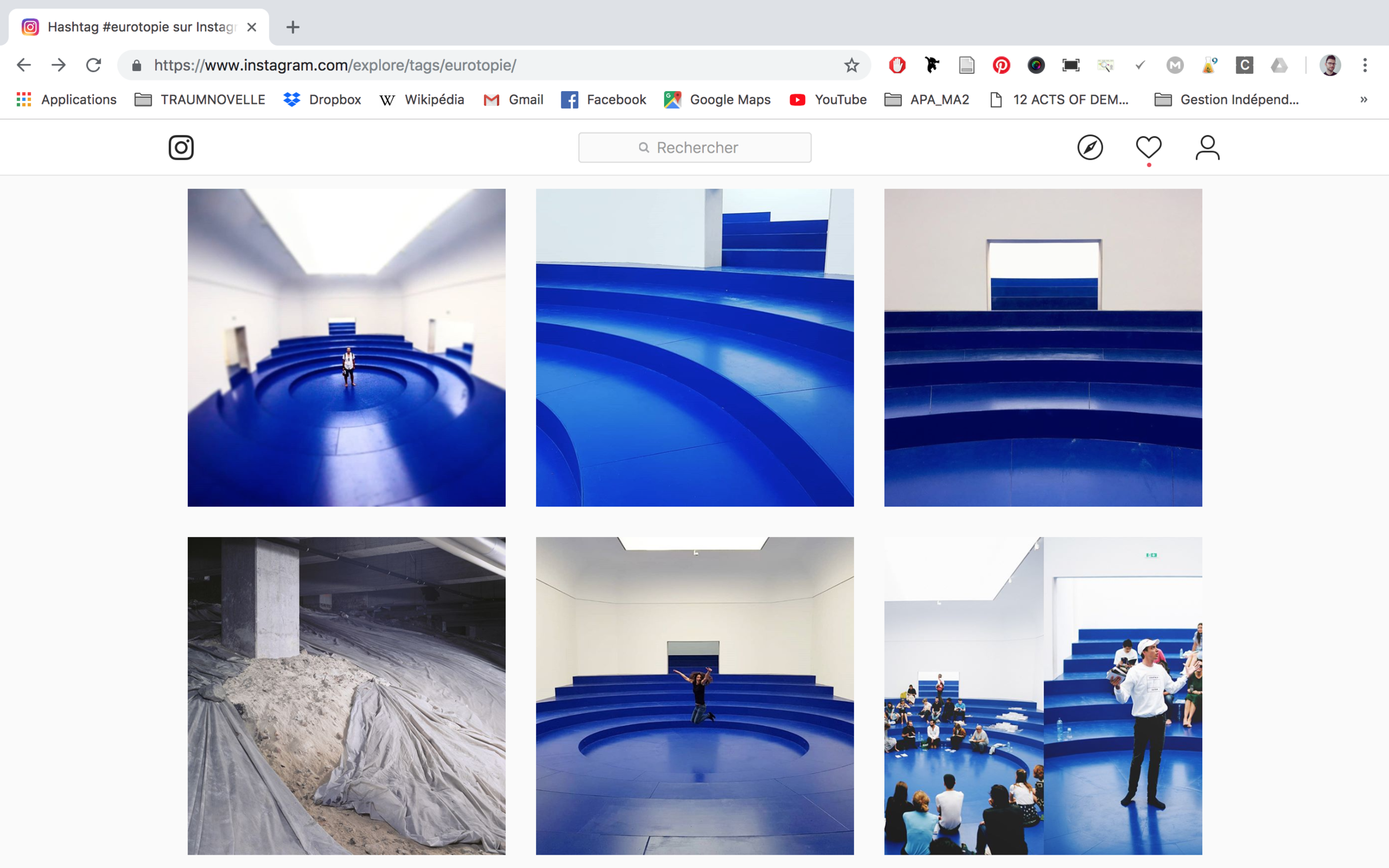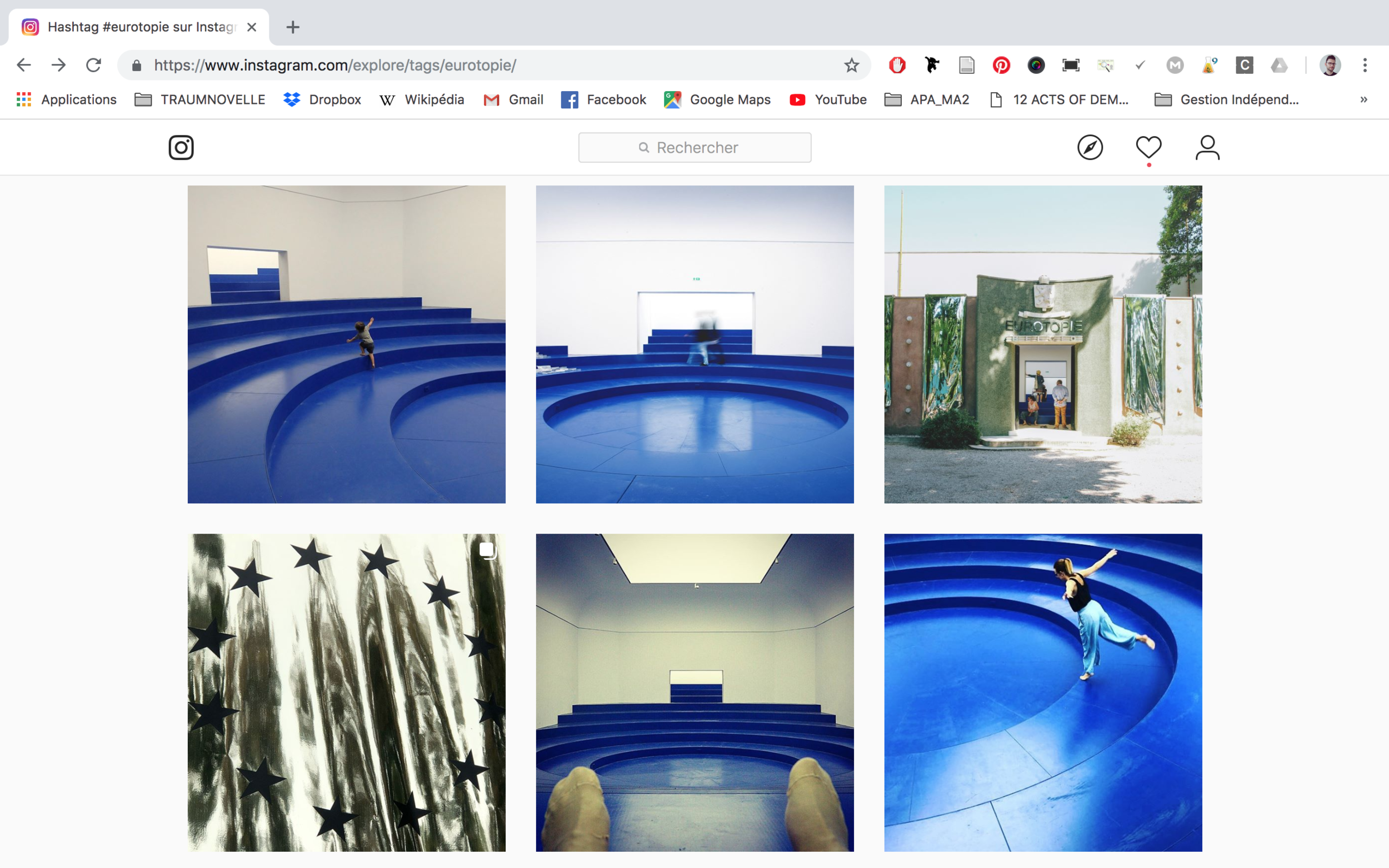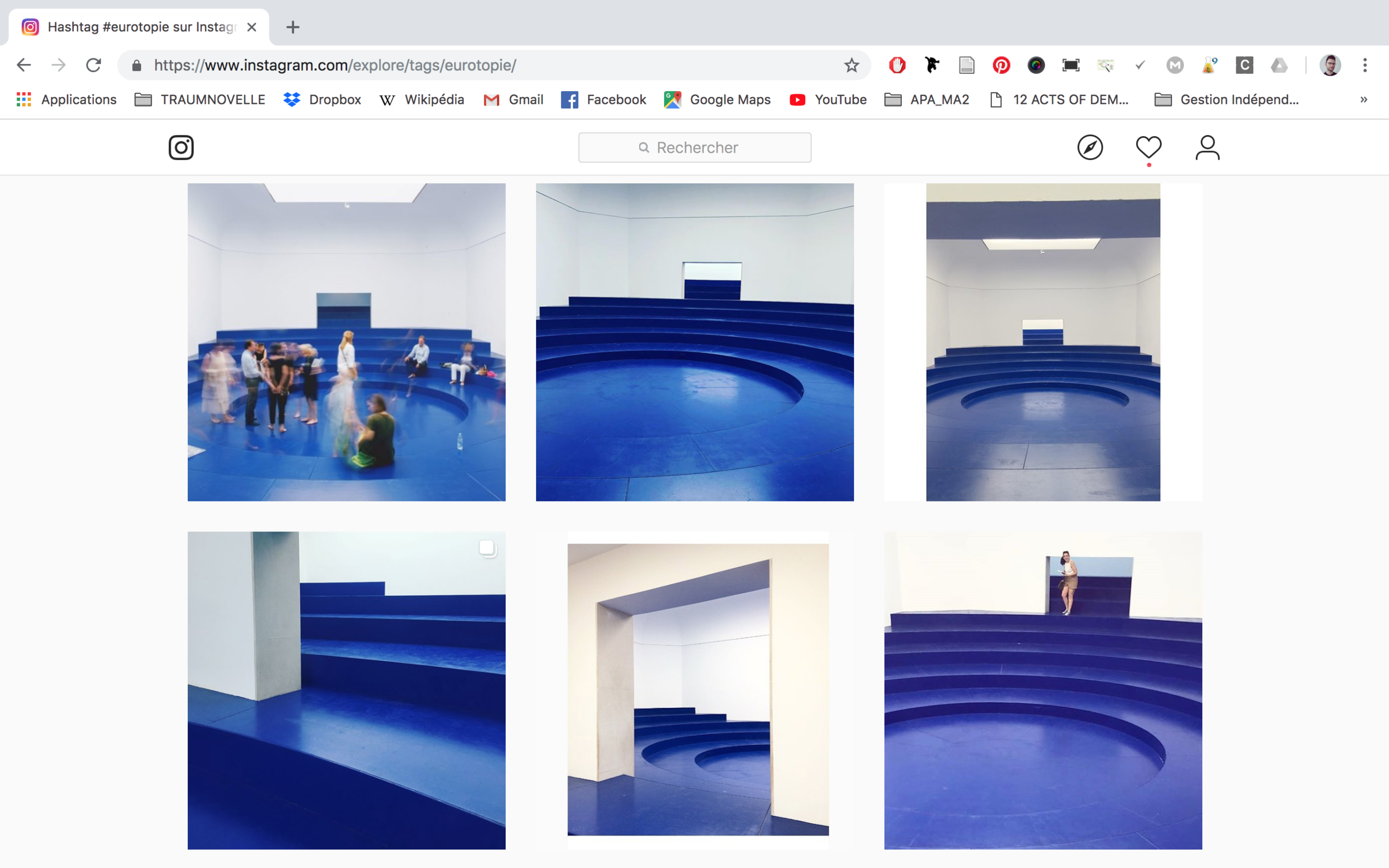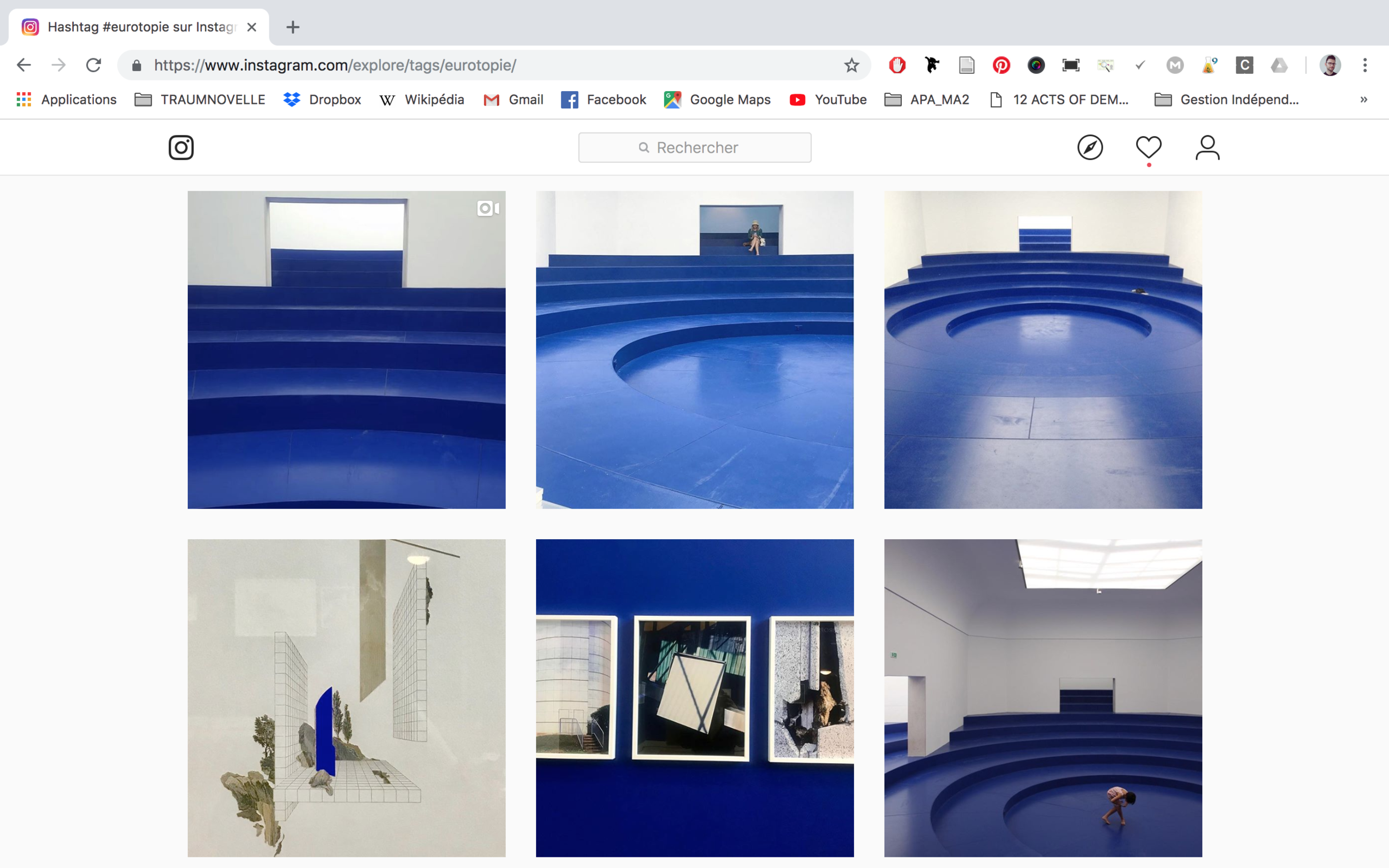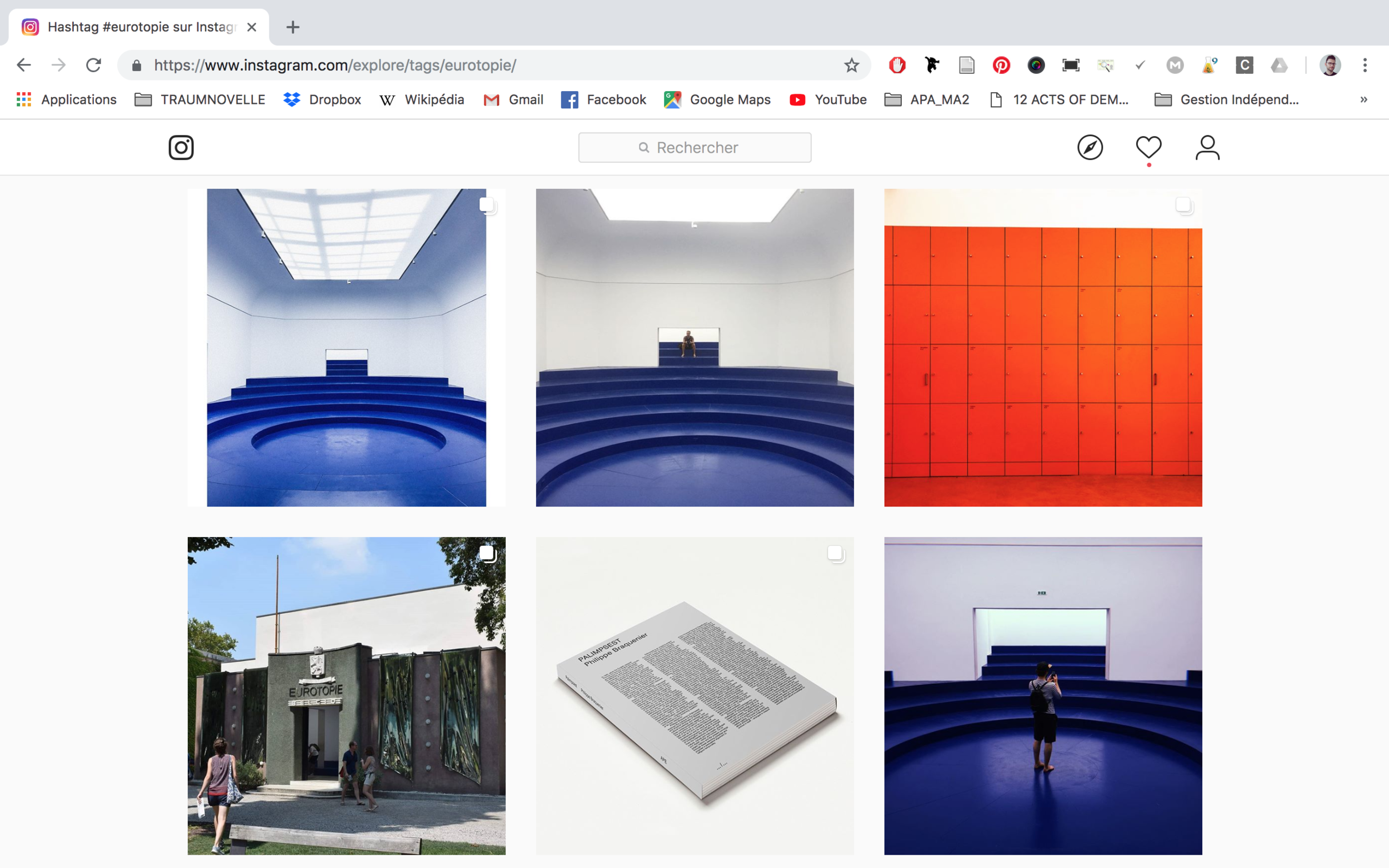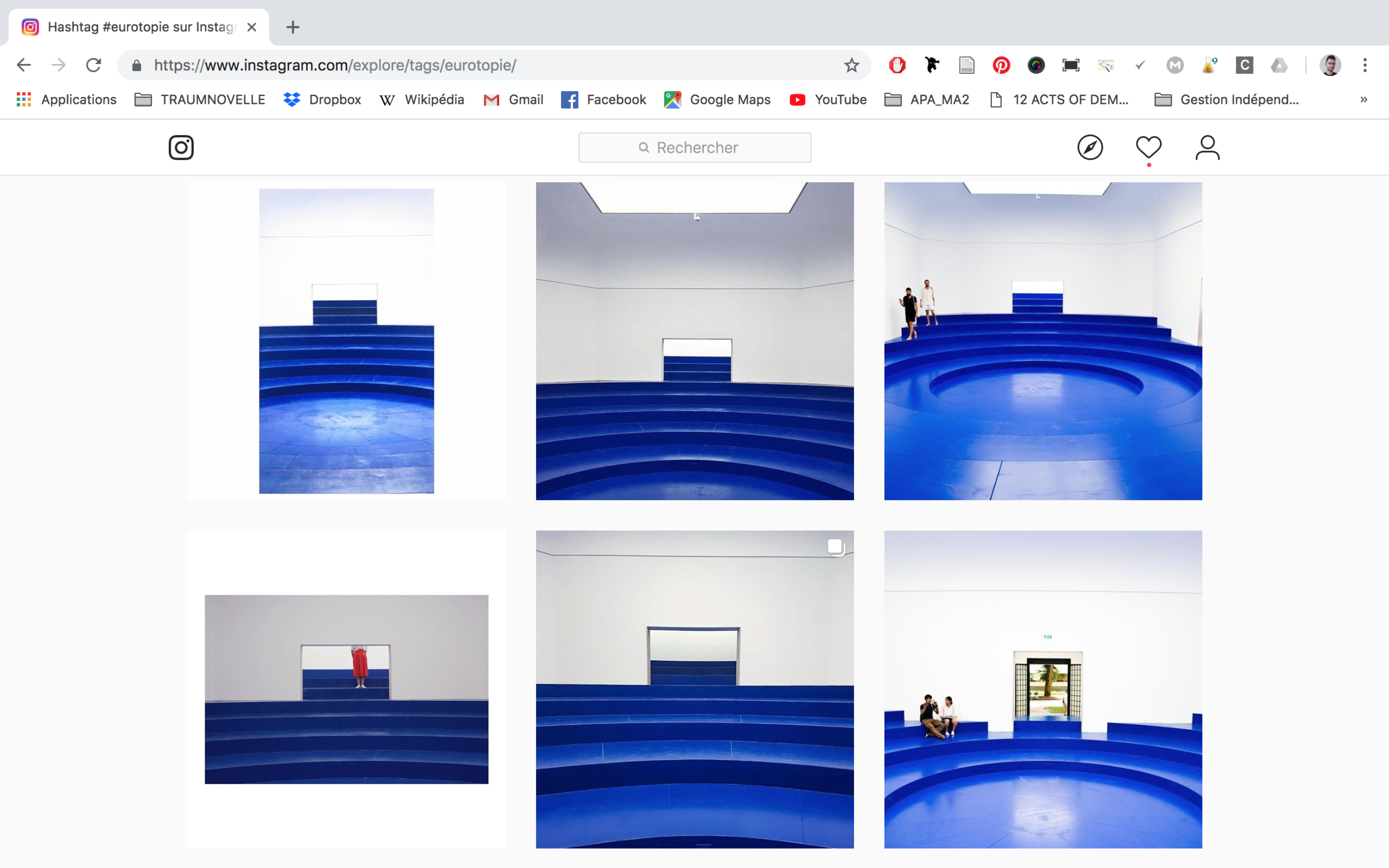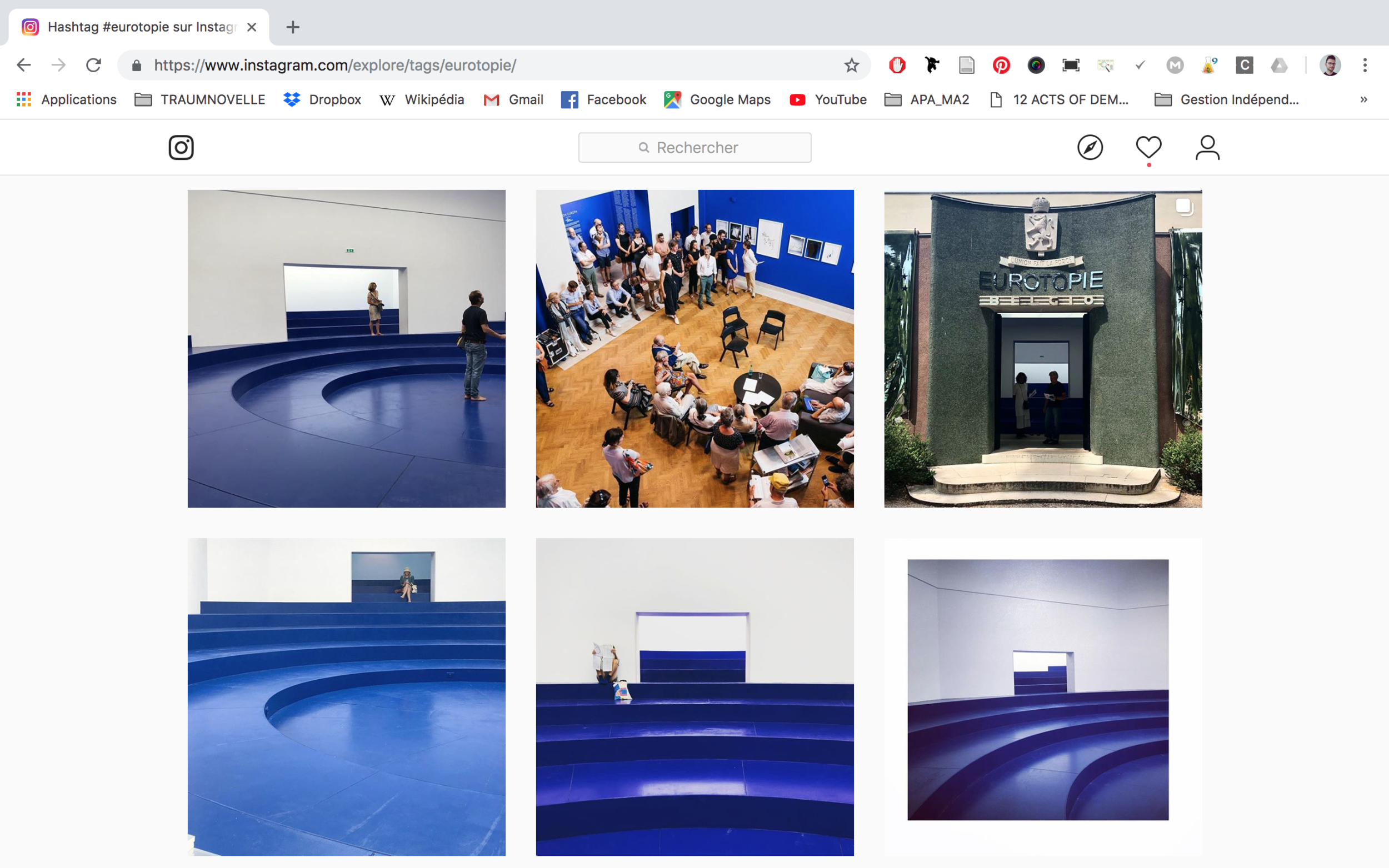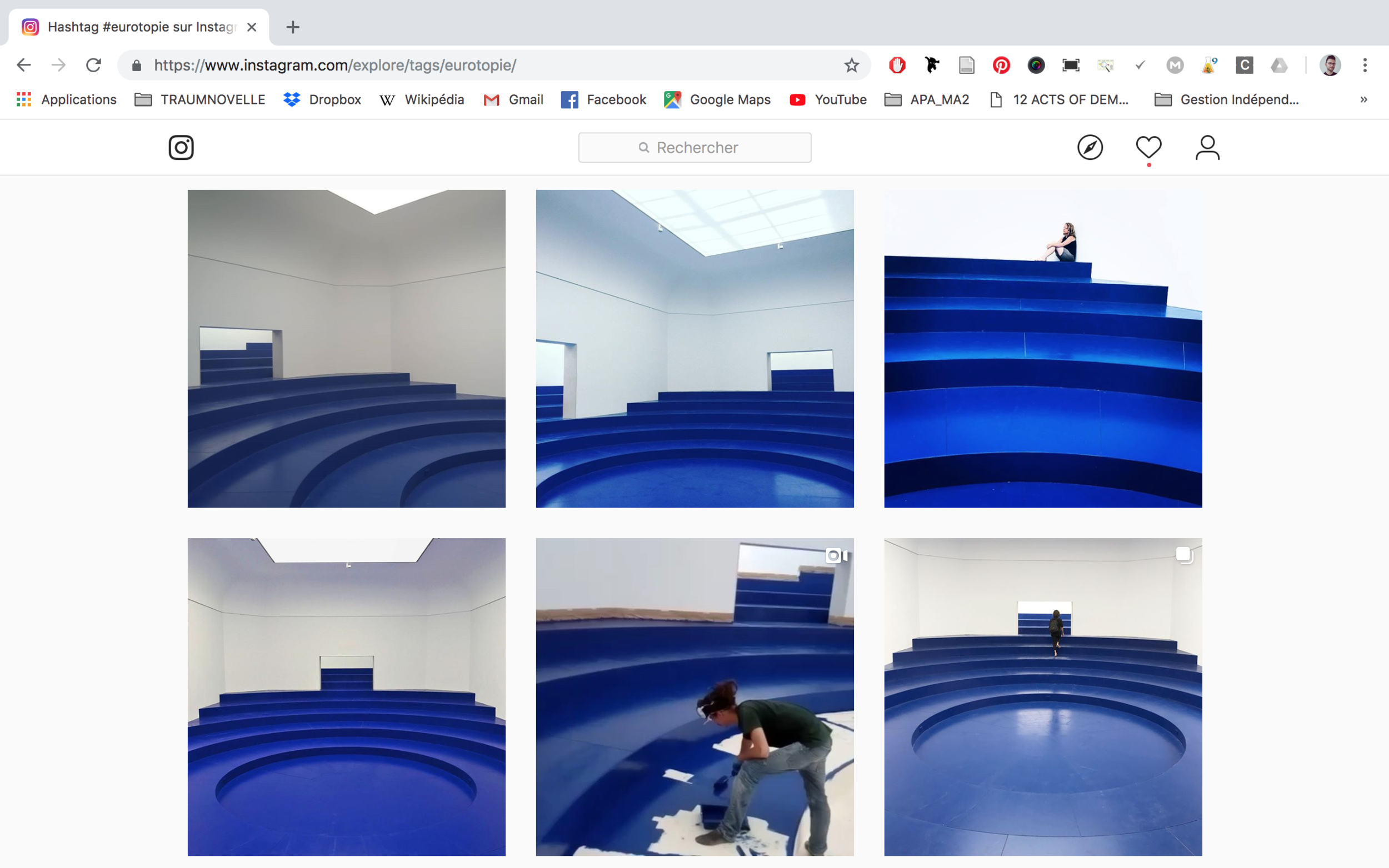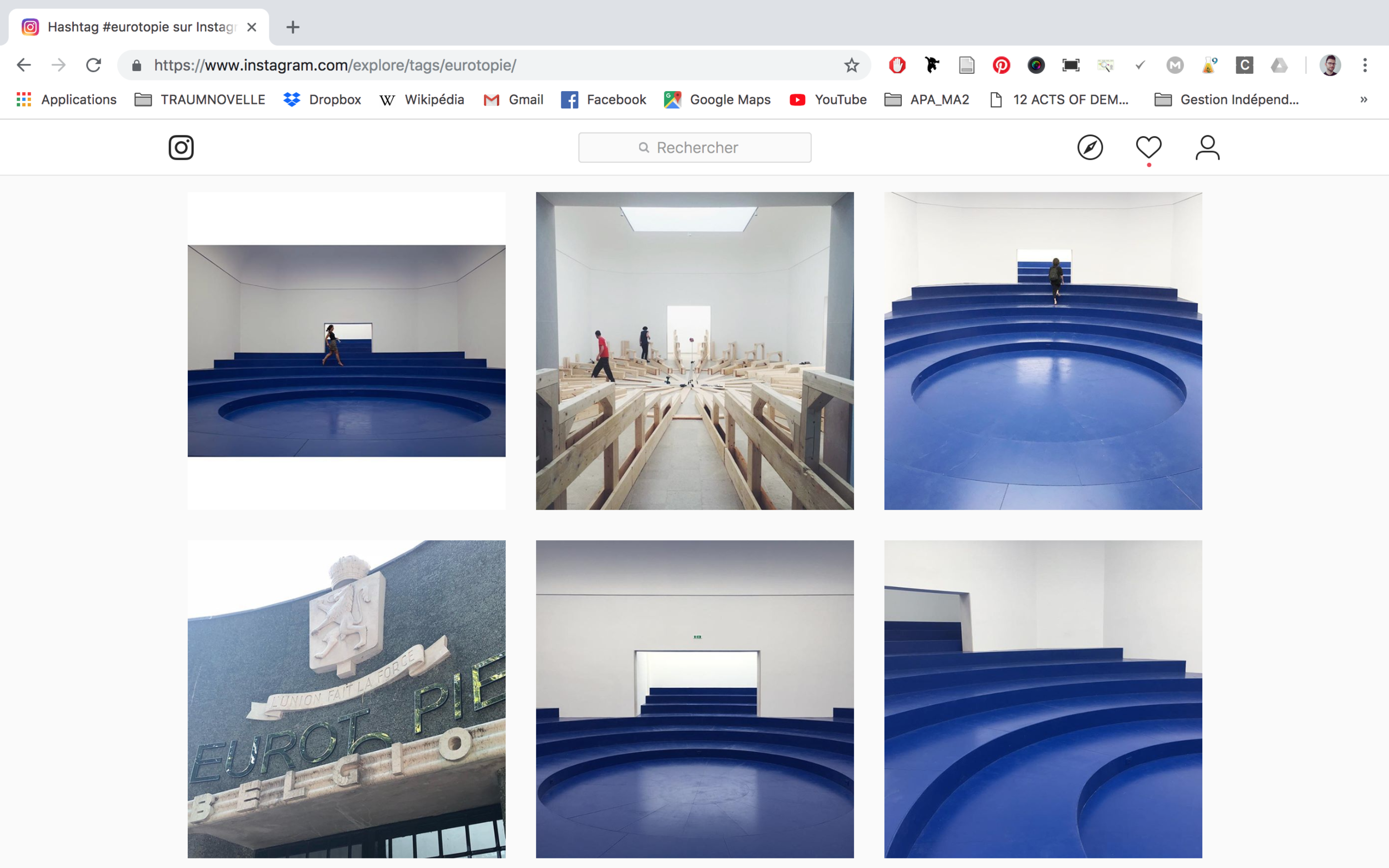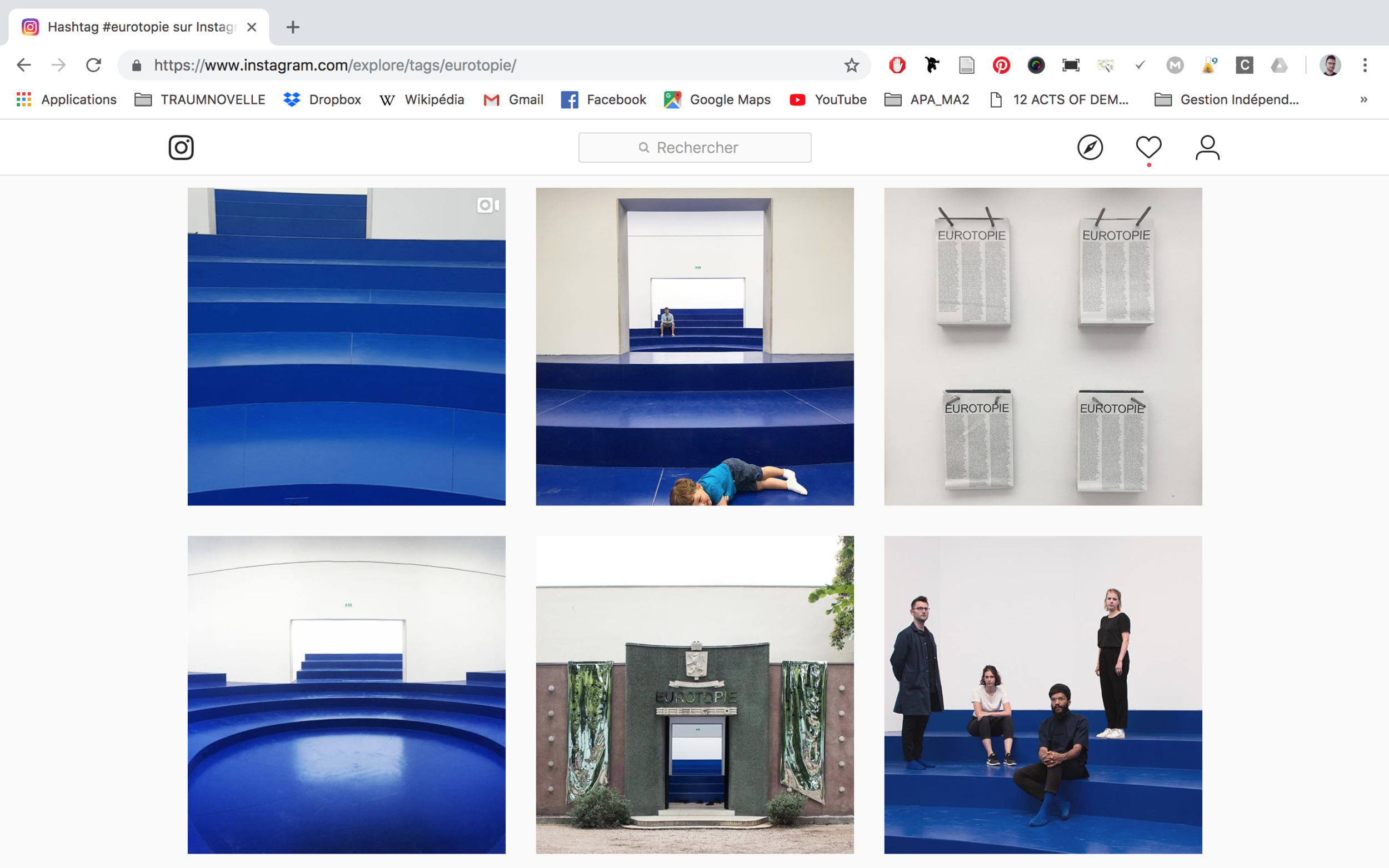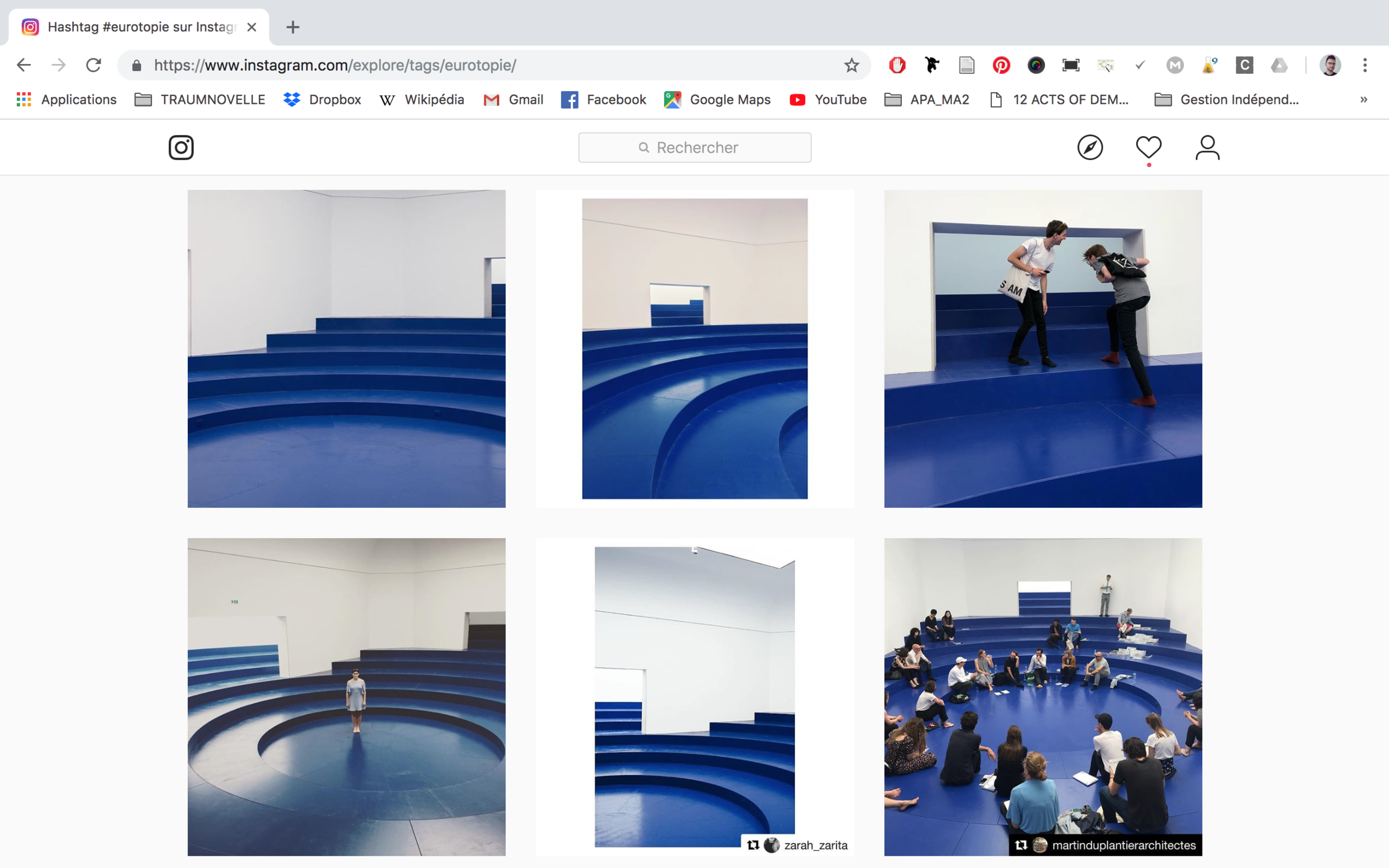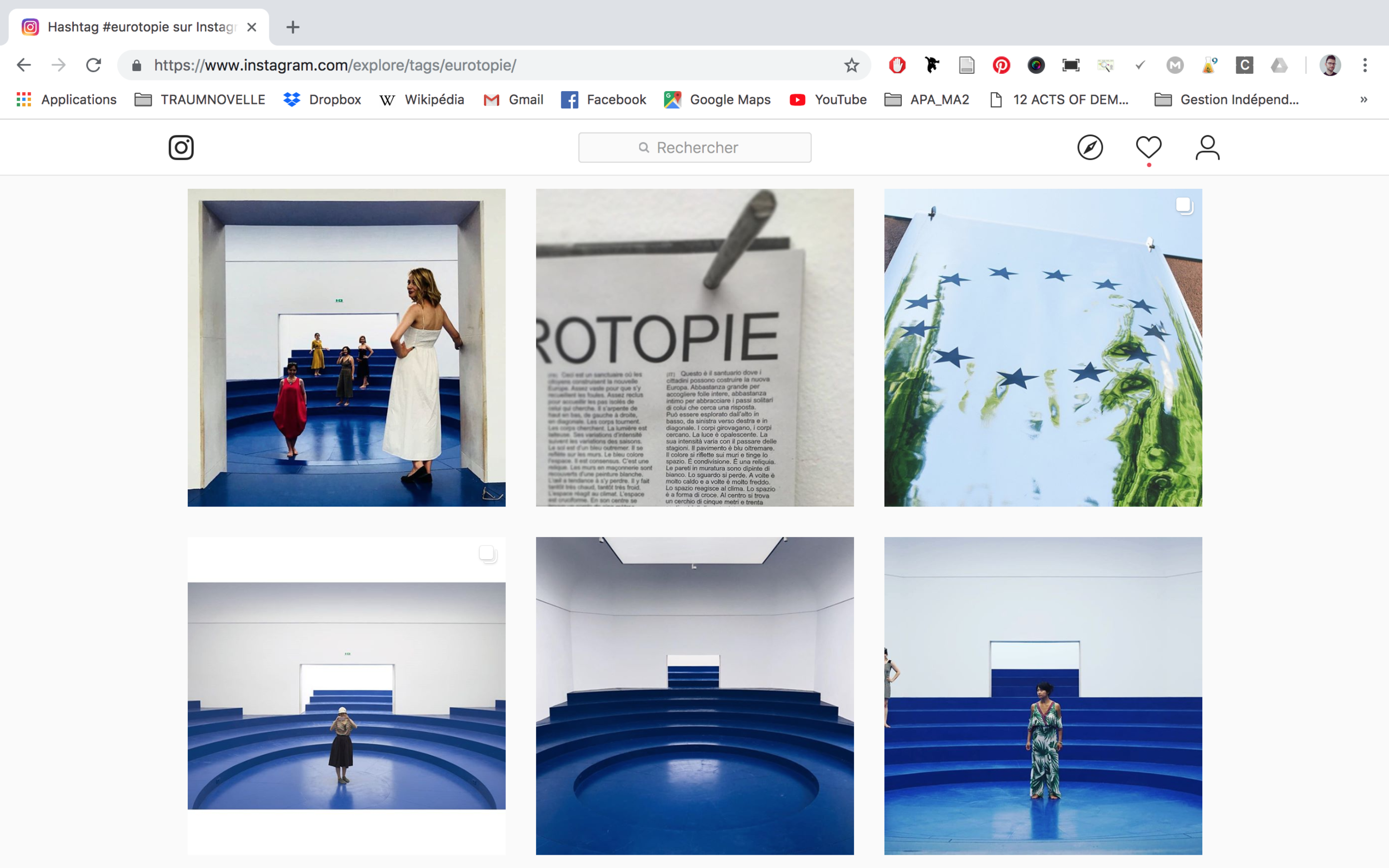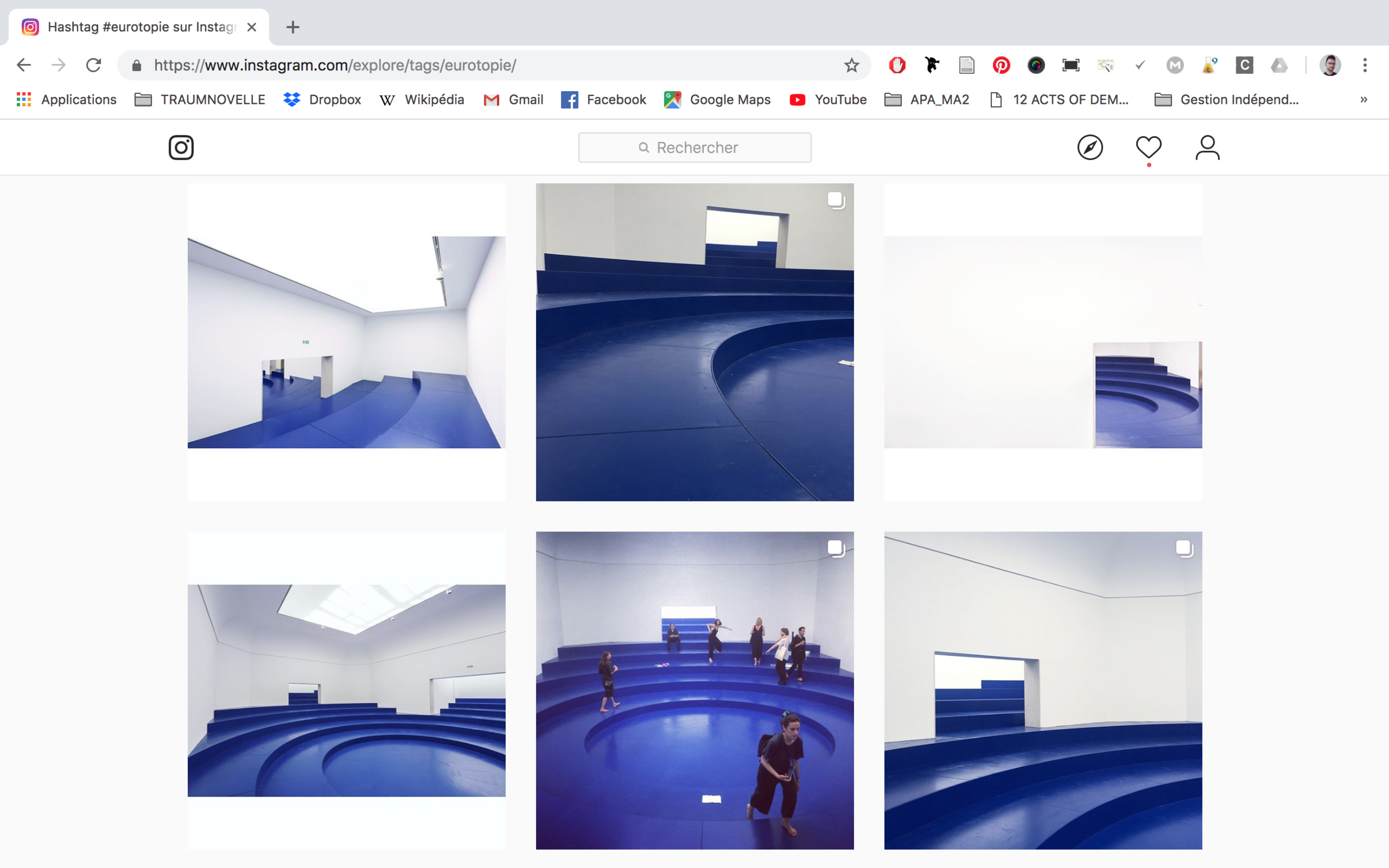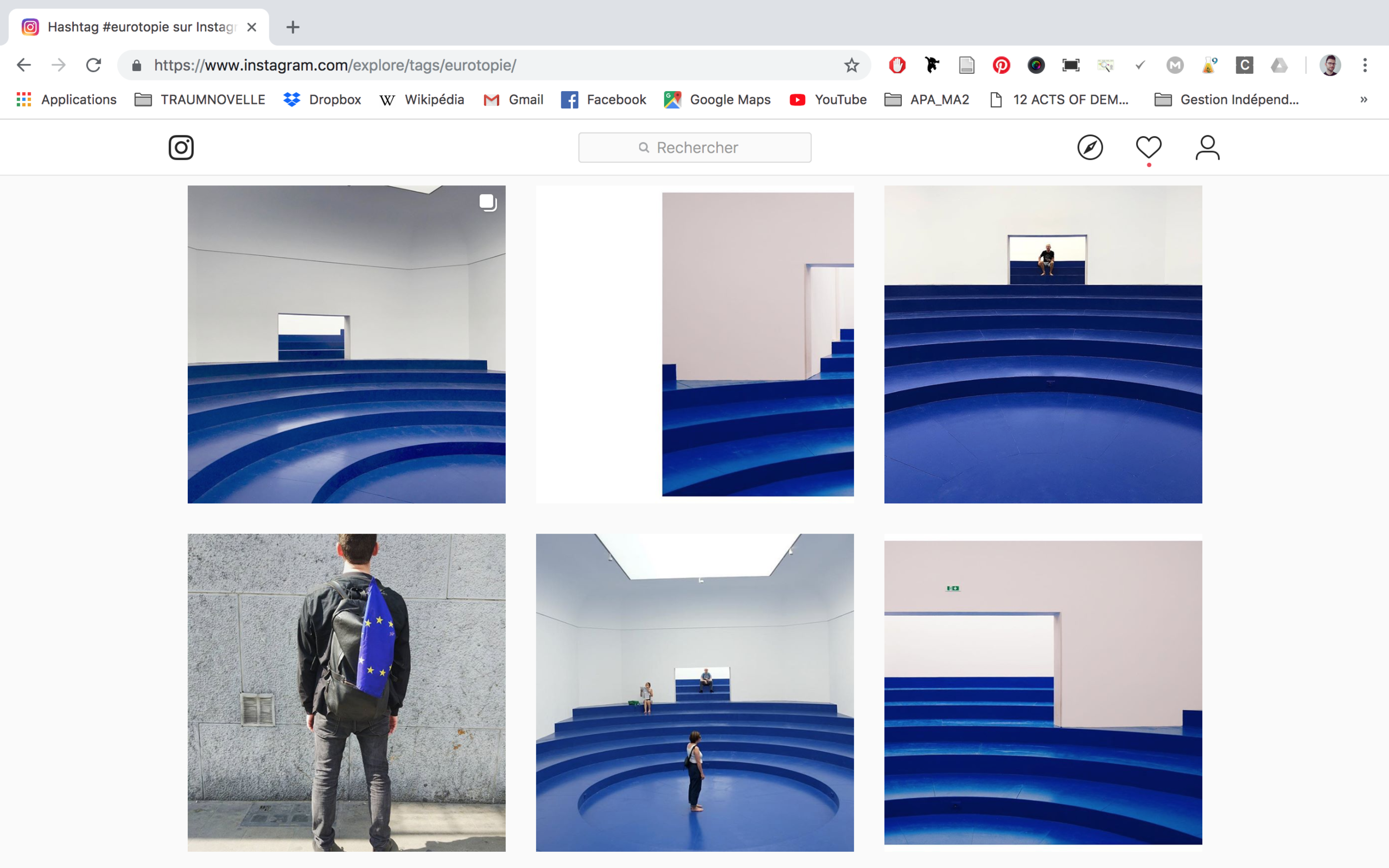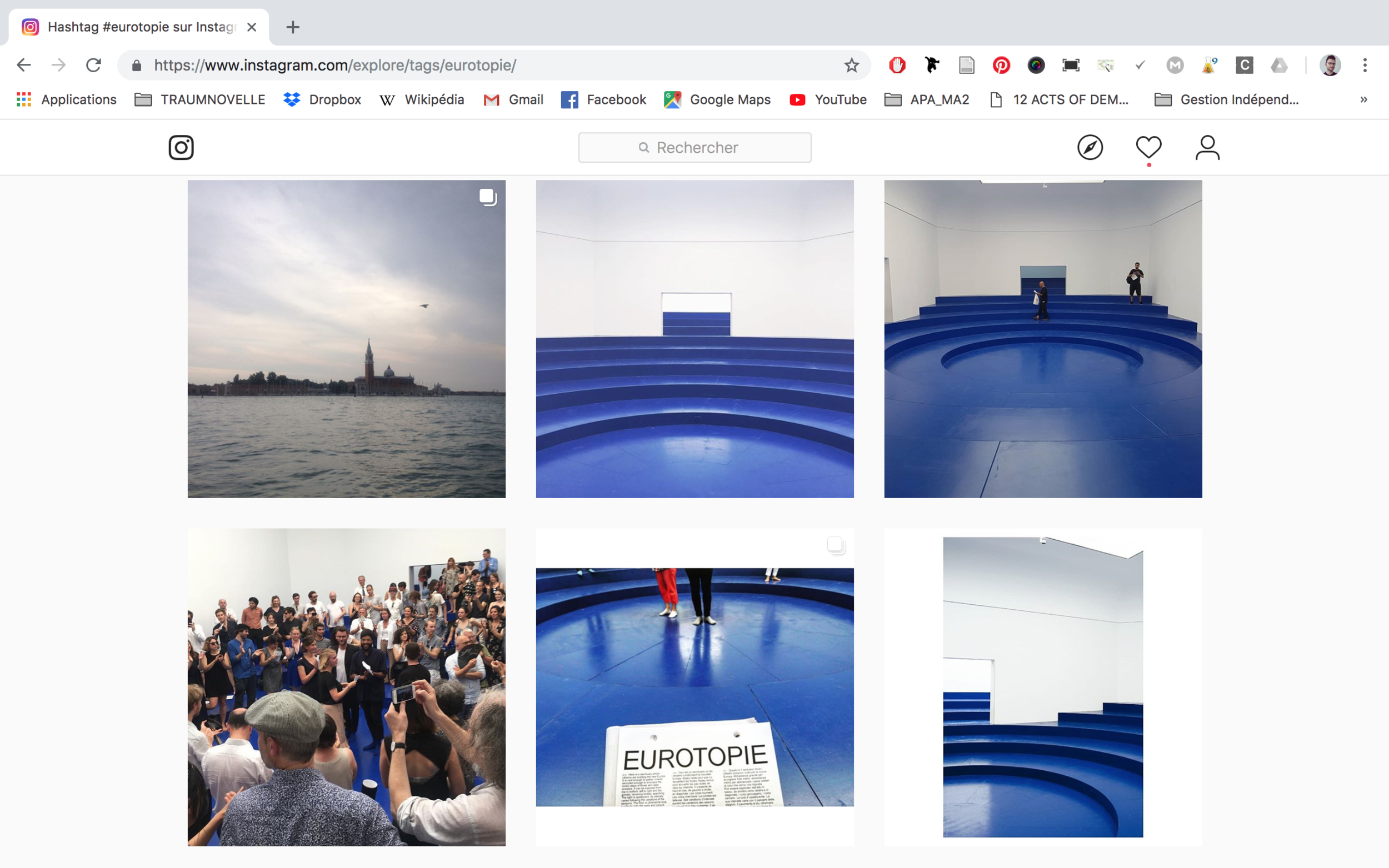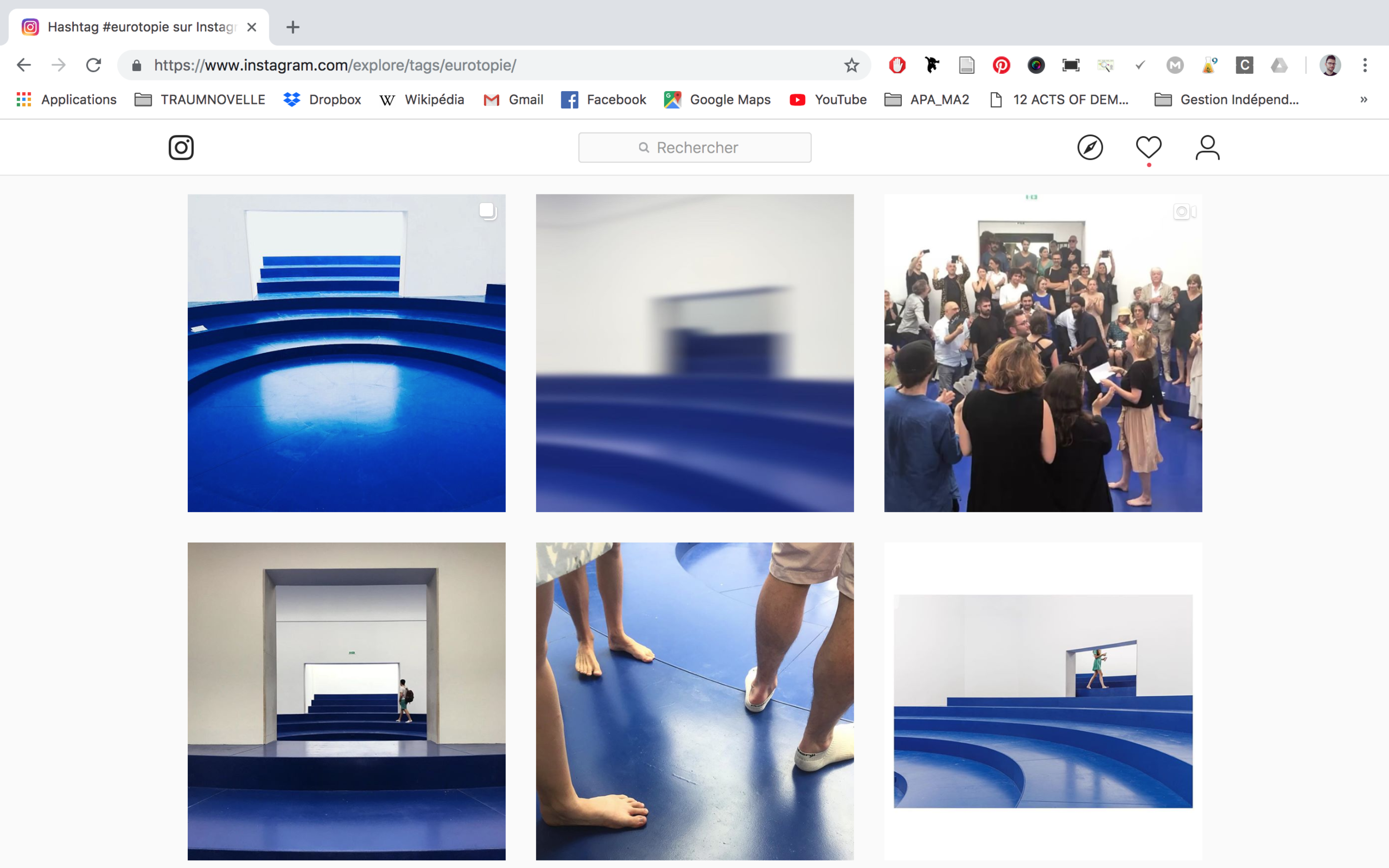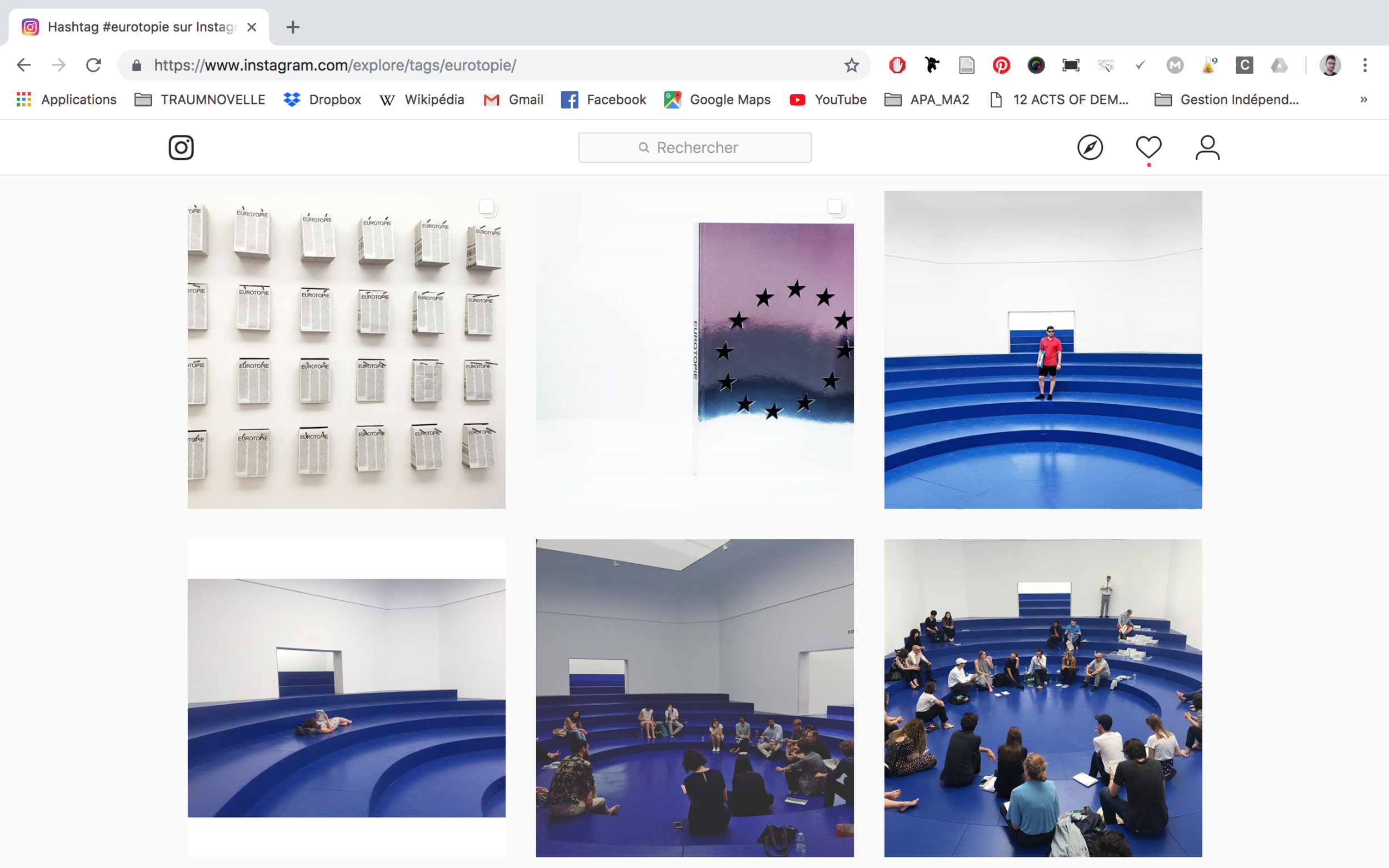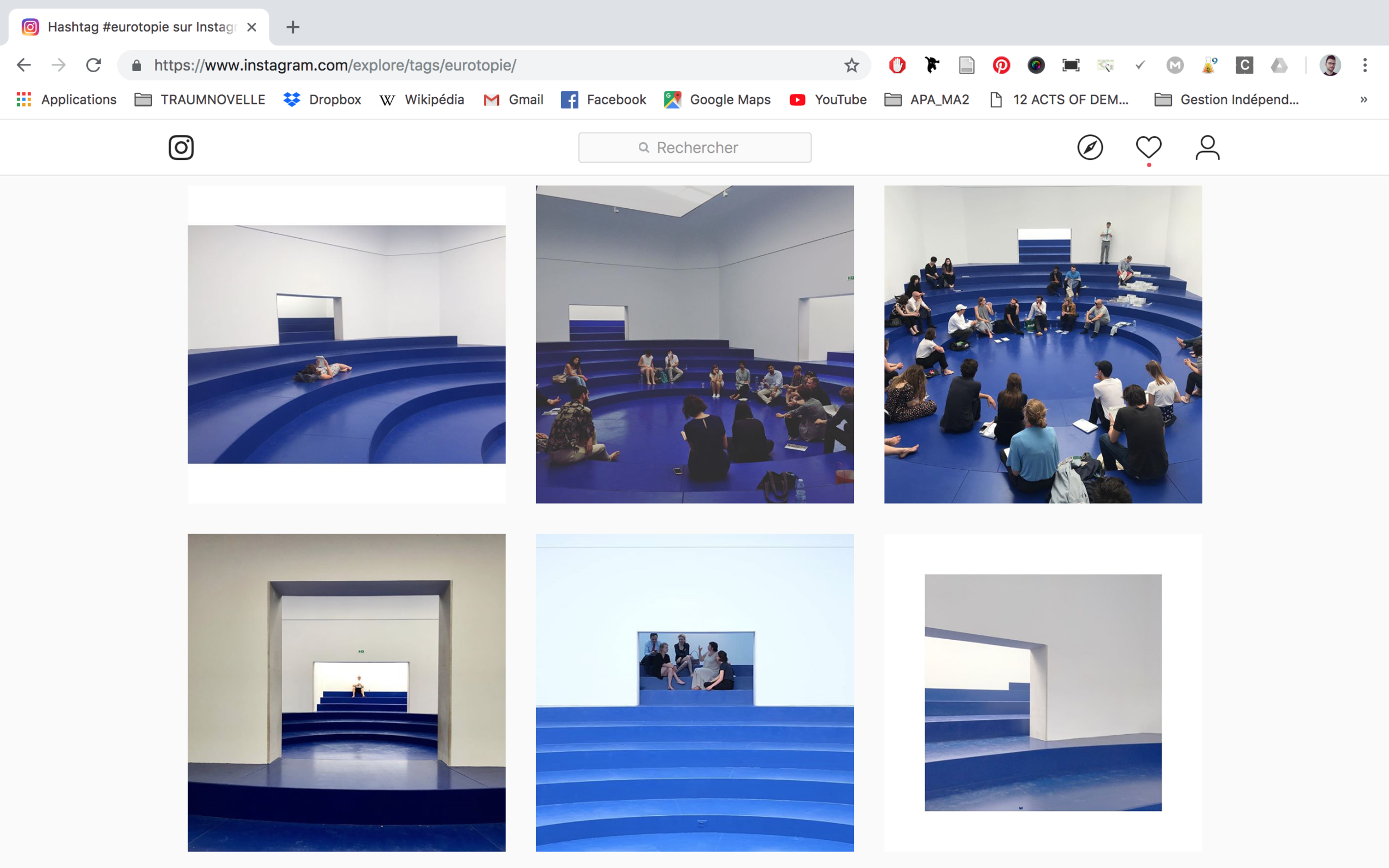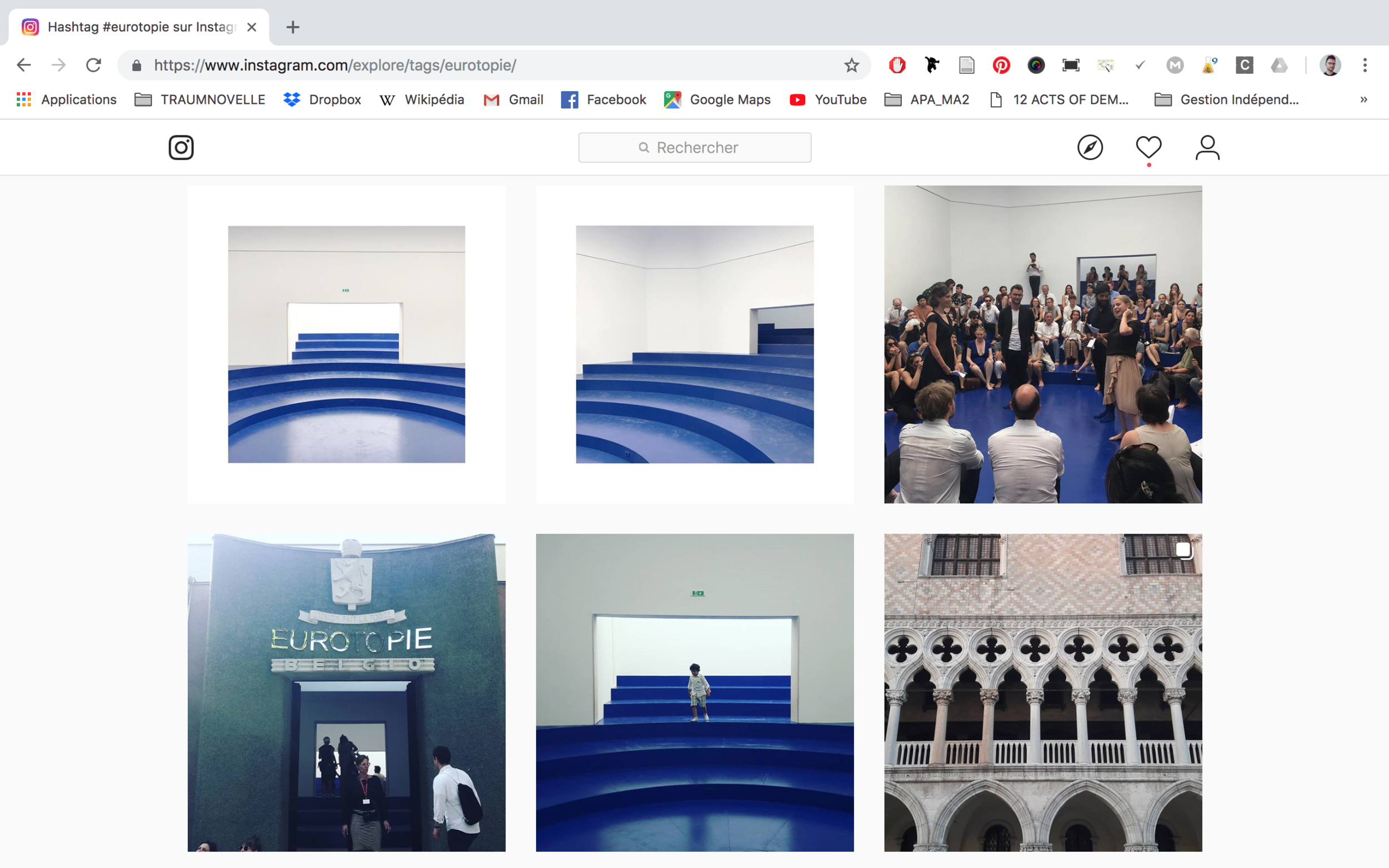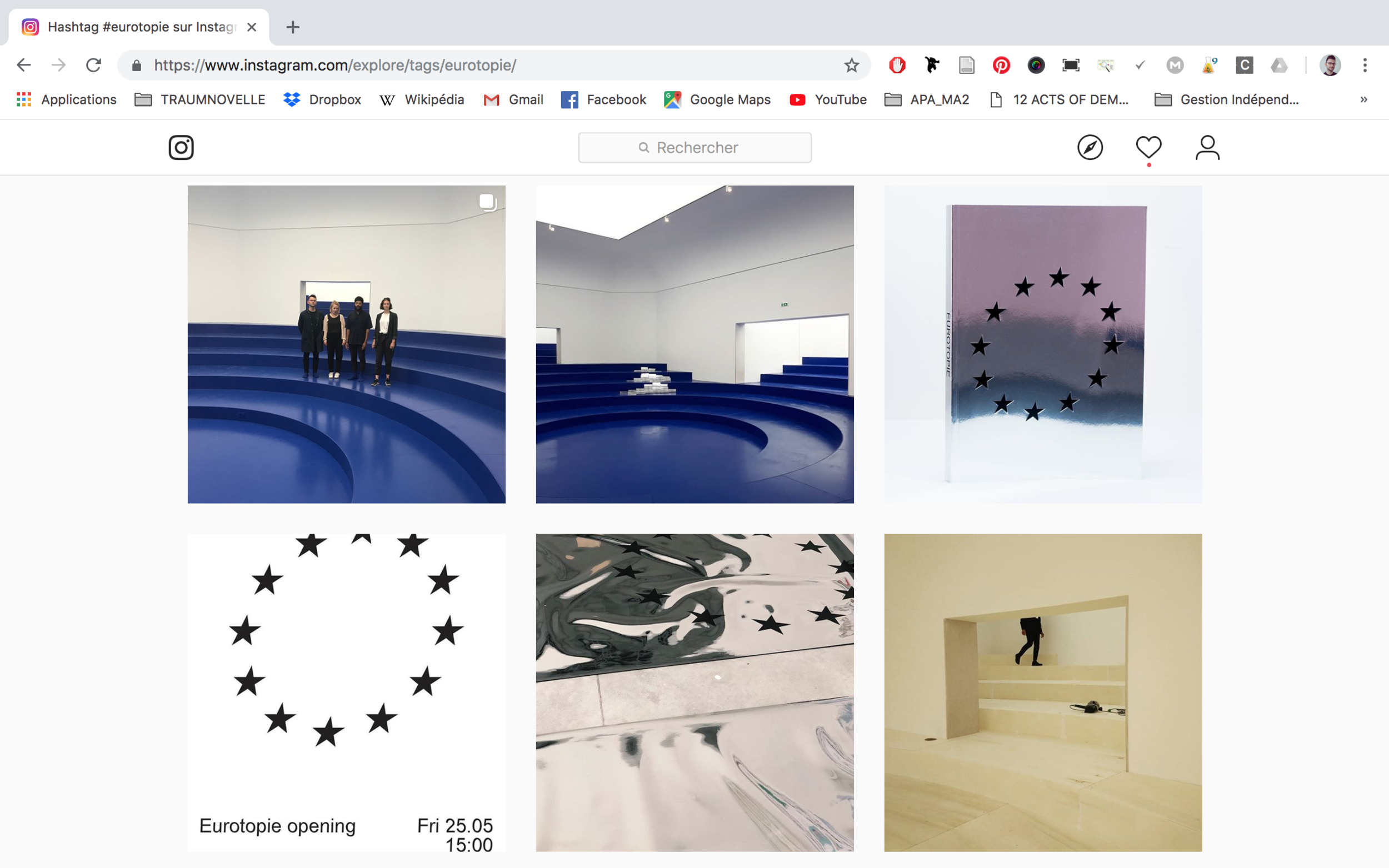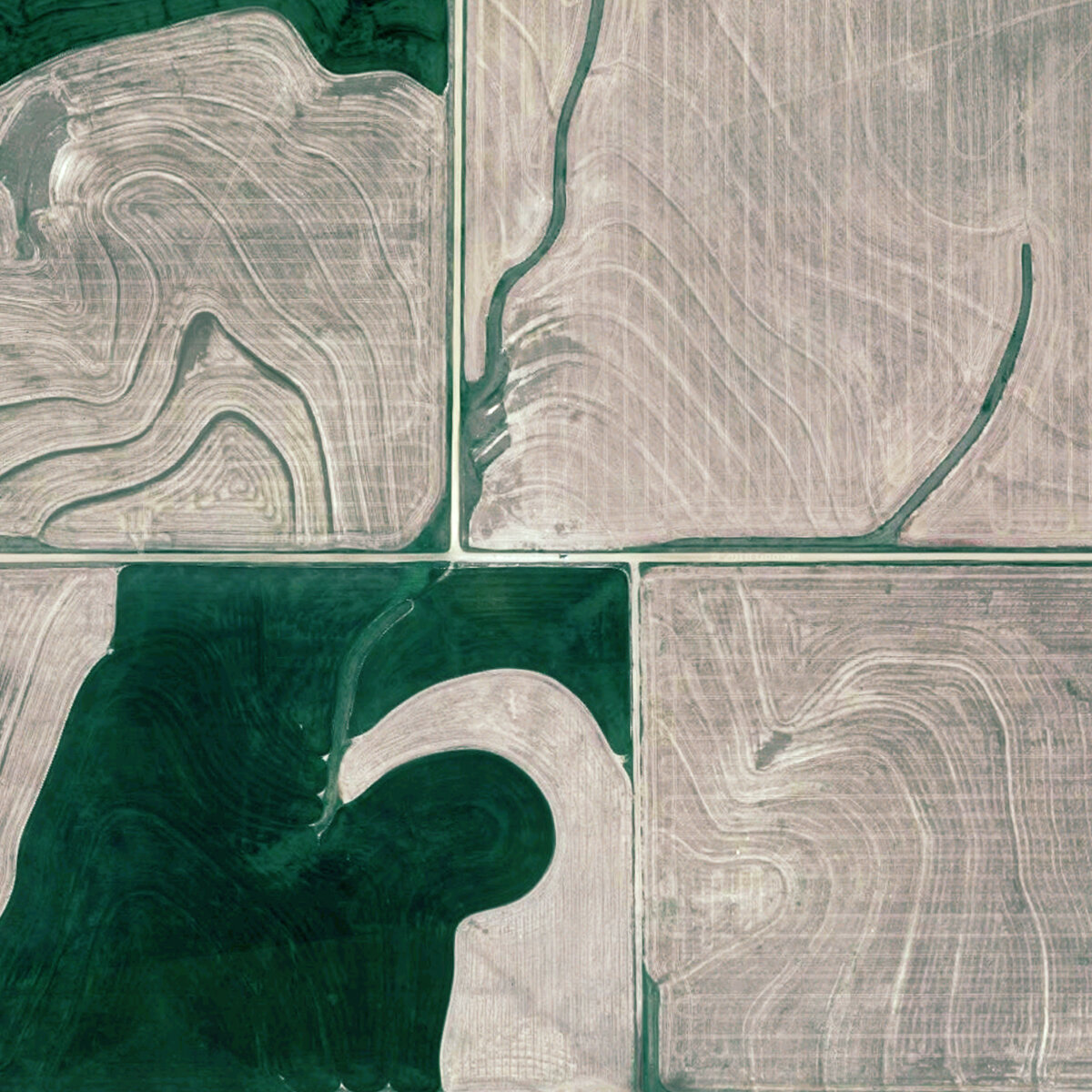Eurotopie

By Traumnovelle
Here is a sanctuary where citizens are building the new Europe. It is vast enough to gather crowds, yet secluded enough to embrace the lonely steps of those who seek answers. It can be explored from top to bottom, left to right, and diagonally.
The space is cross shaped. At its centre is a 5.3 m diameter circle at which twenty-seven people are seated. Each circle generates a new circle to gather new citizens. It is the physical manifestation of an invisible network expanding across the territory. The space is a deformed map upon which vestiges of other uses can be perceived. A door frame, a lock, an exit sign, some light fittings—all of these fixtures testify to another use of the space. It is impossible to know which, the solid ground or the centenary walls, were here first. Scale is different here. Some doors are 1.4 m high and bodies must fold themselves in order to reach the alcoves. The pavilion is made up of seven spaces, all the same, all different. Their dimensions vary from 3.2 m to 10 m in width and 5.8 m to 17 m in length. Their heights vary according to the ground and movement. At the centre, the radiant ceiling is 6 m high. In the lateral niches, where those who prefer to ponder the state of the Union seek refuge, it can be grazed with extended fingers.
There are steps. At 30 cm high, they are both obstacles and resting places for tired bodies. The ground rises, dips, and rises again. Movement recomposes a dodecaphonic ode throughout the space as revolving bodies march, tip-toe, or dance across its expanse. The space vibrates with a recomposed hymn to many possible futures. Bare feet catch the melodic pulsations and convey their energies to the introspective stroller, both grounding and lightning footfalls. The arched corners of the main room reverberate any sound tenfold to the most central point of the space. An anthem rising from the ground begins with low frequencies of a repeated chant. Voices sing of a common dream embraced by all people. As the voices transform, they transform the space. The ground rumbles as a reminder that nothing is less stable than an ideal. At last, the chants then spread, reverberate, and echo. They guide uncertain steps to explore new corners or lookouts. The chanting voices dissolve to silence, only to rise again.
The light is opalescent. Its intensity modulates following the variations of the seasons. The ceiling catches the sun’s revolving rays and diffuses them softly, tainting the light with the hues of the day. The floor is ultramarine blue. It is warm to the touch. It reflects onto the walls and colours the space. The colour is consensual, in between the infinite blue of the sea and the indistinctive blue of mechanical instruments and institutional systems. It is a relic. The cool masonry walls are painted white. Eyes tend to lose their focus. It is either very hot or very cold, very dark or very bright, depending on the season. The space reacts to the climate. Now and then the shadows of some trees and their leaves are projected onto the walls. The climate is revealed in its honest cruelty. This space is not a refuge from the outside. It strives only to empower those who build a better society.
This space is a pavilion, this space is a sanctuary, this space is a place. Bodies are free to enter and free to leave. Some leave after a short time because there is nothing to see while others relish in the freedom granted by the emptiness. They spread their arms, plant their feet and smile. Most often, the central circular arena is left empty. Citizens sit in semicircles and listen to others speak of Europe’s legacy and of another Europe yet to be. Some retire to more secluded corners while some use dancing as the only way to embrace the space. Some people skip, run, jump, or play. Some plan great projects while others ponder slightly illicit activities. People crying or people laughing, others shouting and lecturing. This space is one of those in which secrets can be whispered. Citizens are free. Here, Eurotopie is under construction. This is your pavilion. This is your Europe. Welcome to Eurotopie.
In 2018, Belgium granted Eurotopie the occupation of its Pavilion at the Biennale di Venezia. Through a multi-layered approach to the construction of a future Europe, curator Traumnovelle, in association with Roxane le Grelle, posit architecture and space as mediums for democratic expression. Contributions by philosopher and author Bruce Bégout, photographer Philippe Braquenier, artist Sébastien Lacomblez, architect and philosopher Dennis Pohl, artist Claire Trotignon, and graphic designer 6’56’’ (Jurgen Maelfeyt) are to be found in the “Voyage to Eurotopie” travel diary. With the generous support of Fédération Wallonie-Bruxelles and Wallonie Bruxelles International.
#eurotopie, 2018. Instagram photo, February 2, 2019.
Bio
Traumnovelle is a militant faction founded by three Belgian architects: Léone Drapeaud, Manuel León Fanjul and Johnny Leya. Traumnovelle uses architecture and fiction as analytical, critical and subversive tools to emphasize contemporary issues and dissect their resolutions. Traumnovelle alternates between cynicism and enthusiasm all the while advocating for critical thinking in architecture. Traumnovelle champions a multi-disciplinary approach with architecture at the crossroads. Traumnovelle distances itself from current forms of naive architecture and refuses to glorify the mundane. Traumnovelle sides with those who have not sacrificed ambition and criticism.







